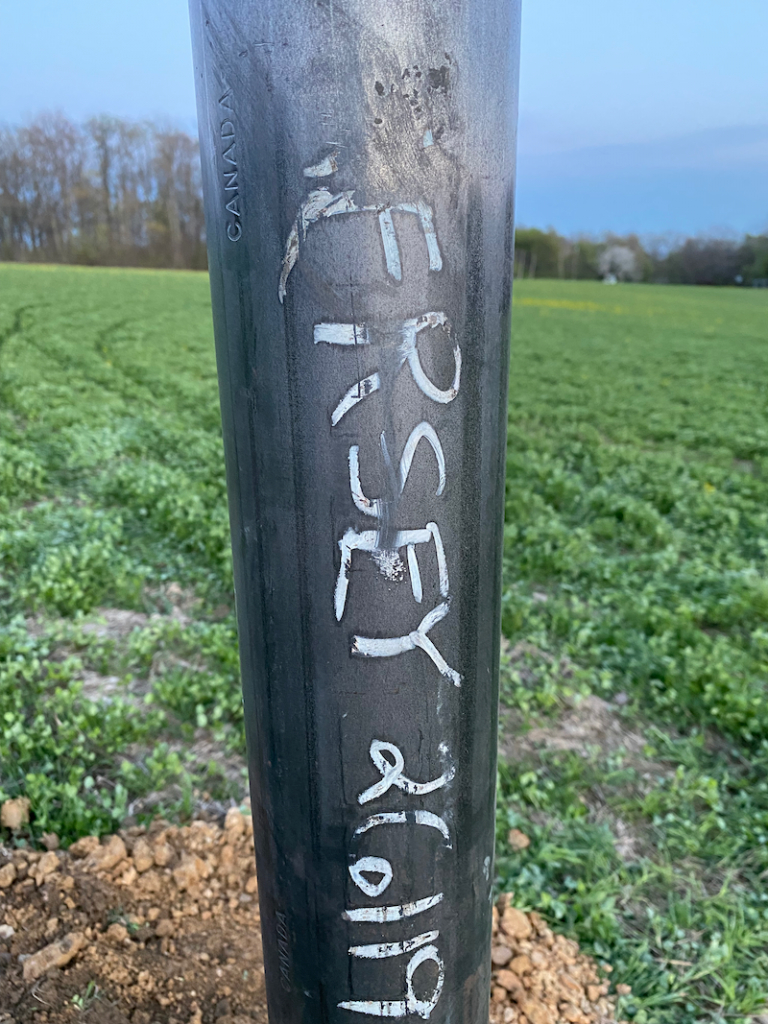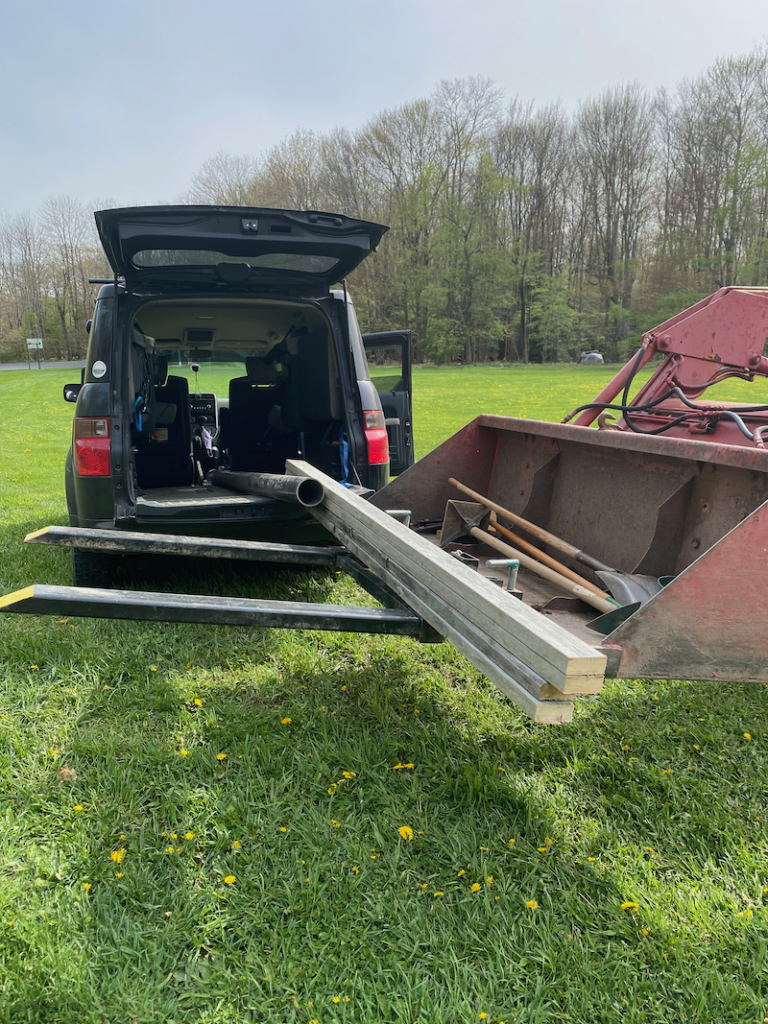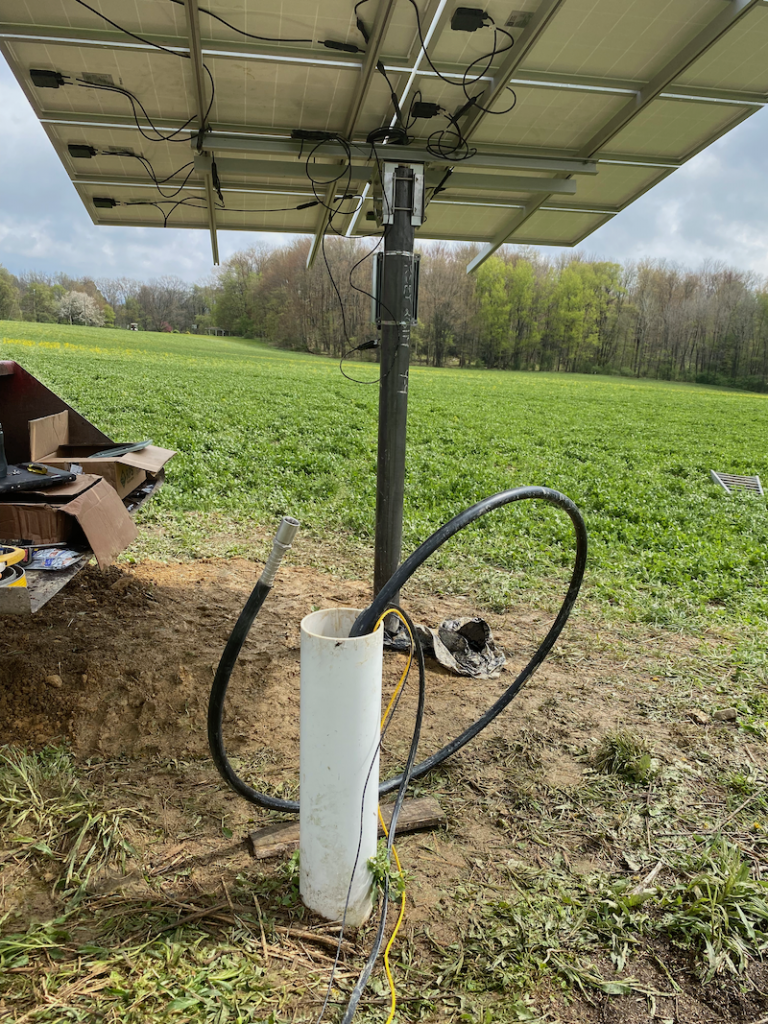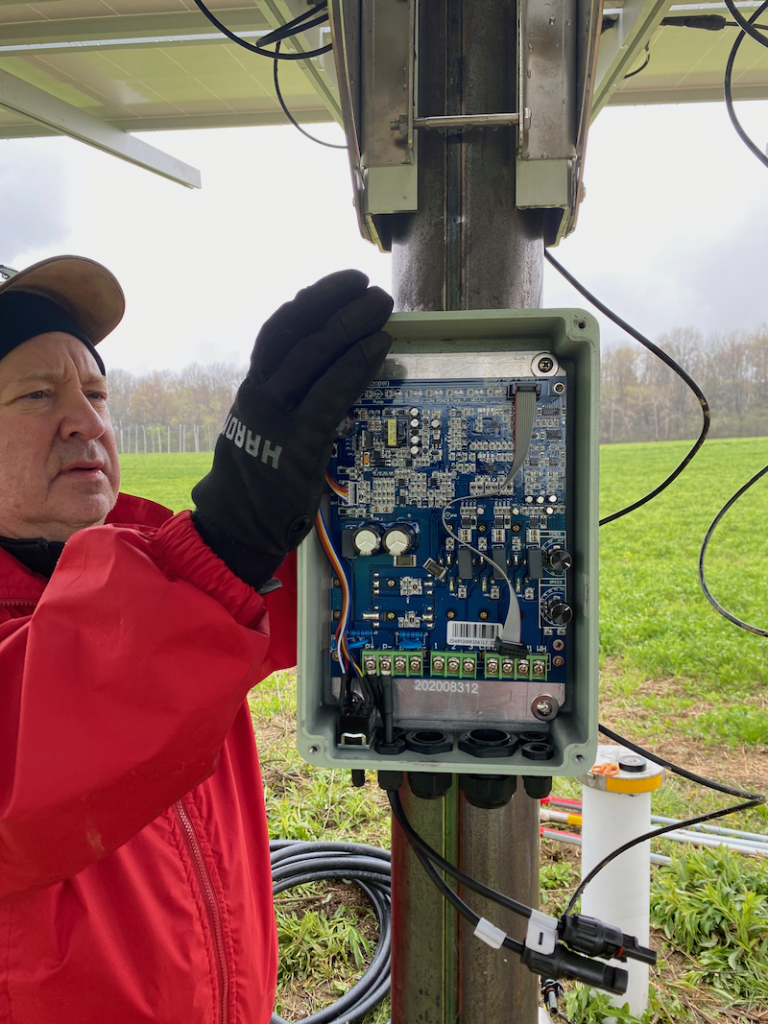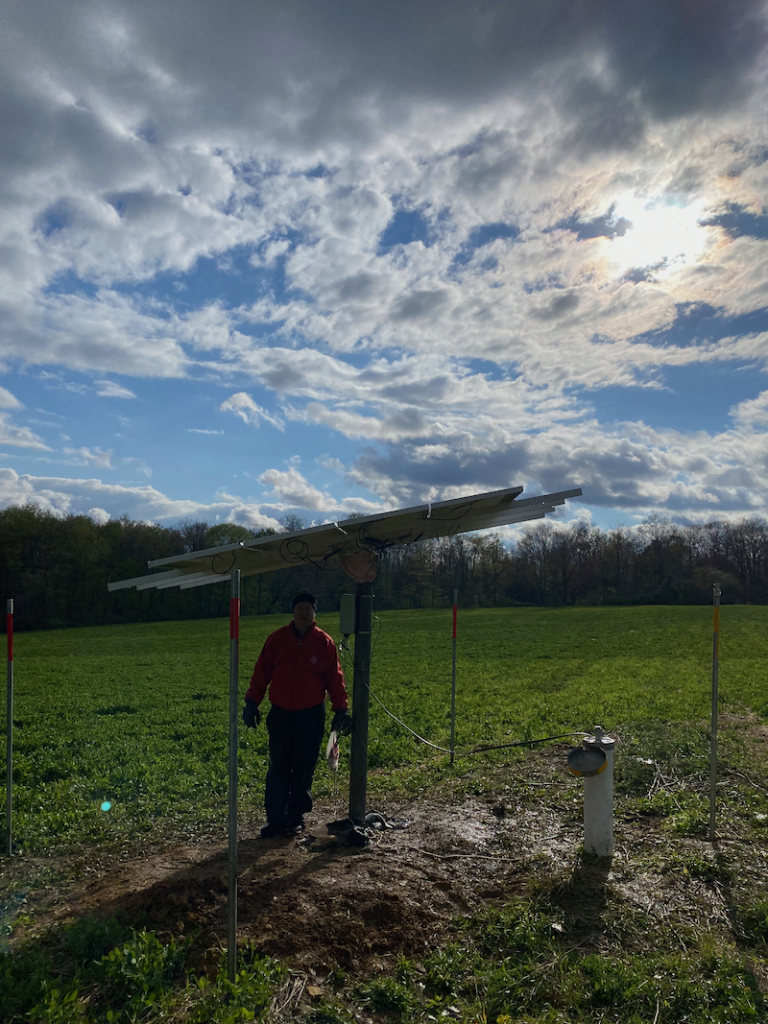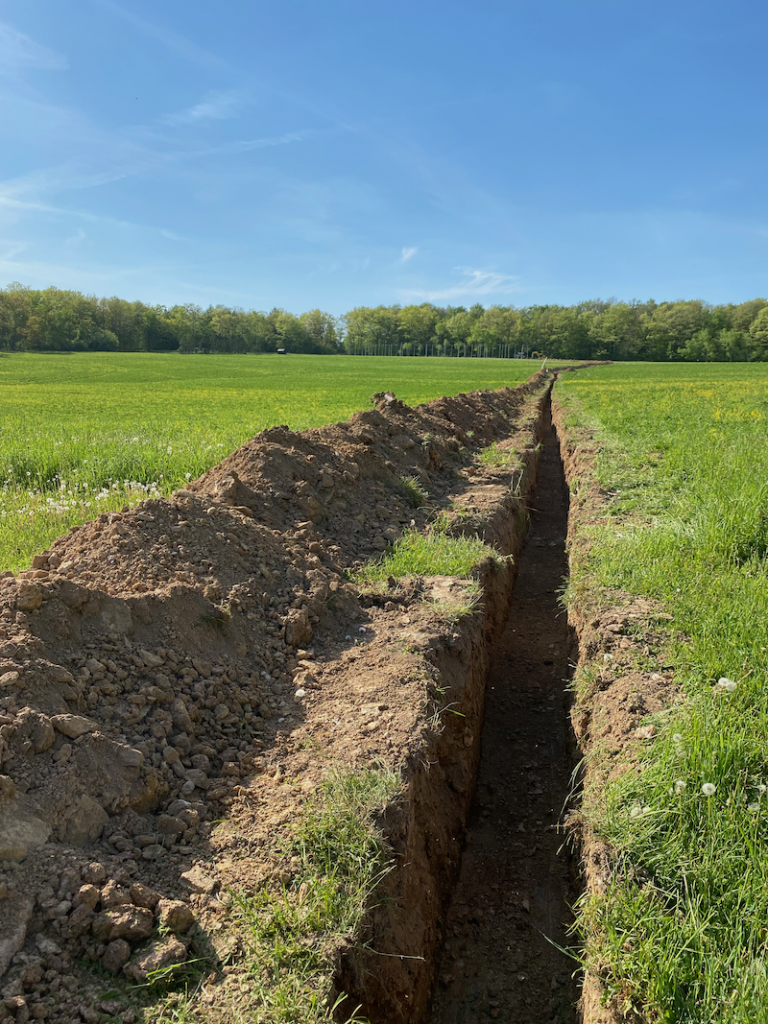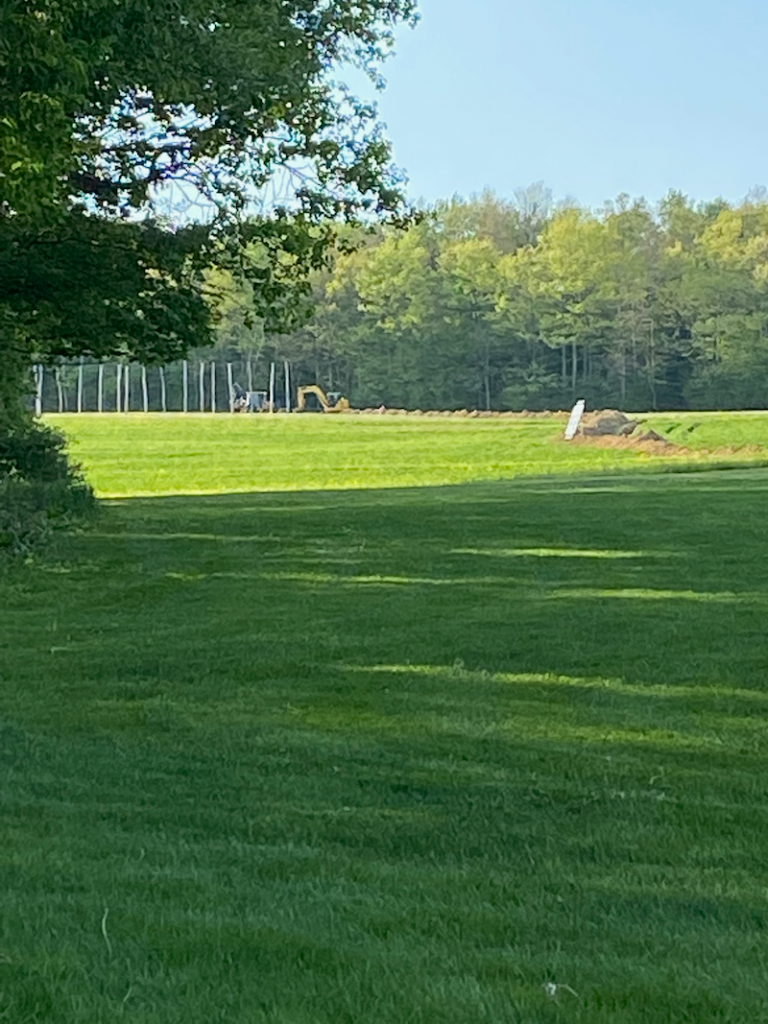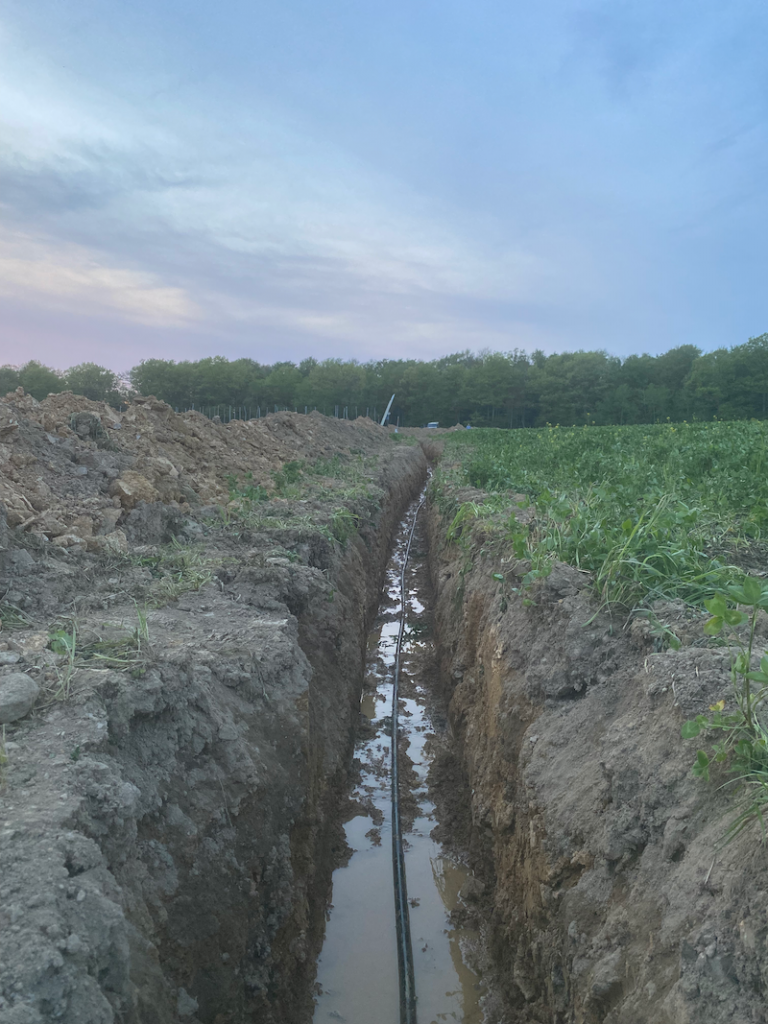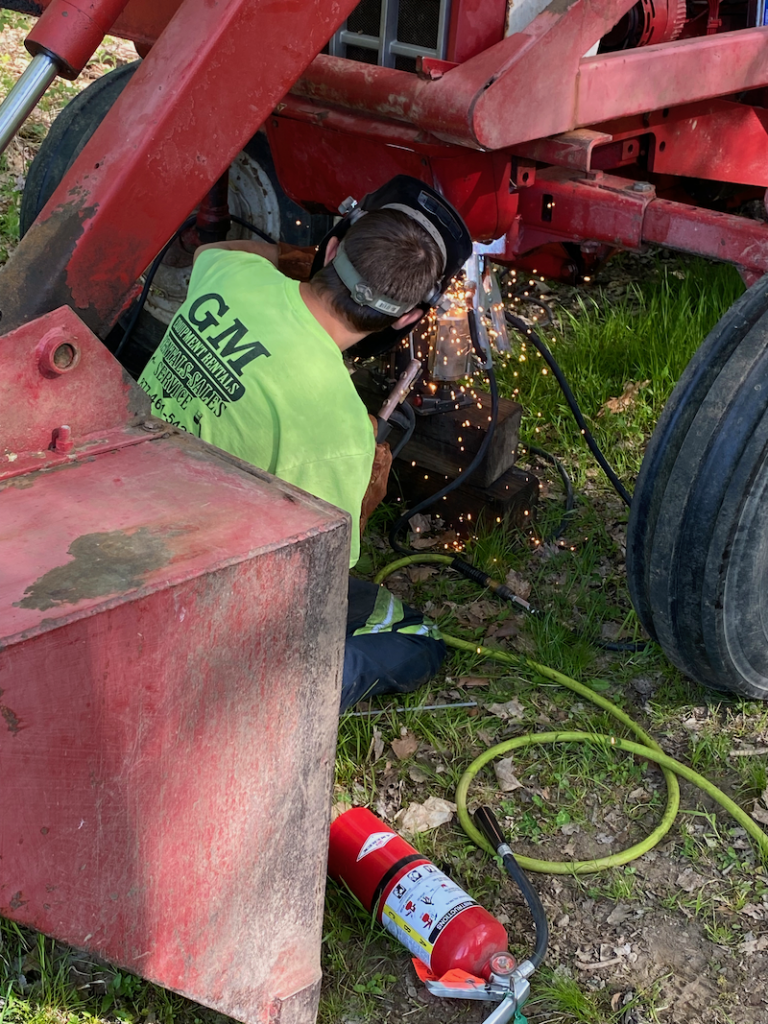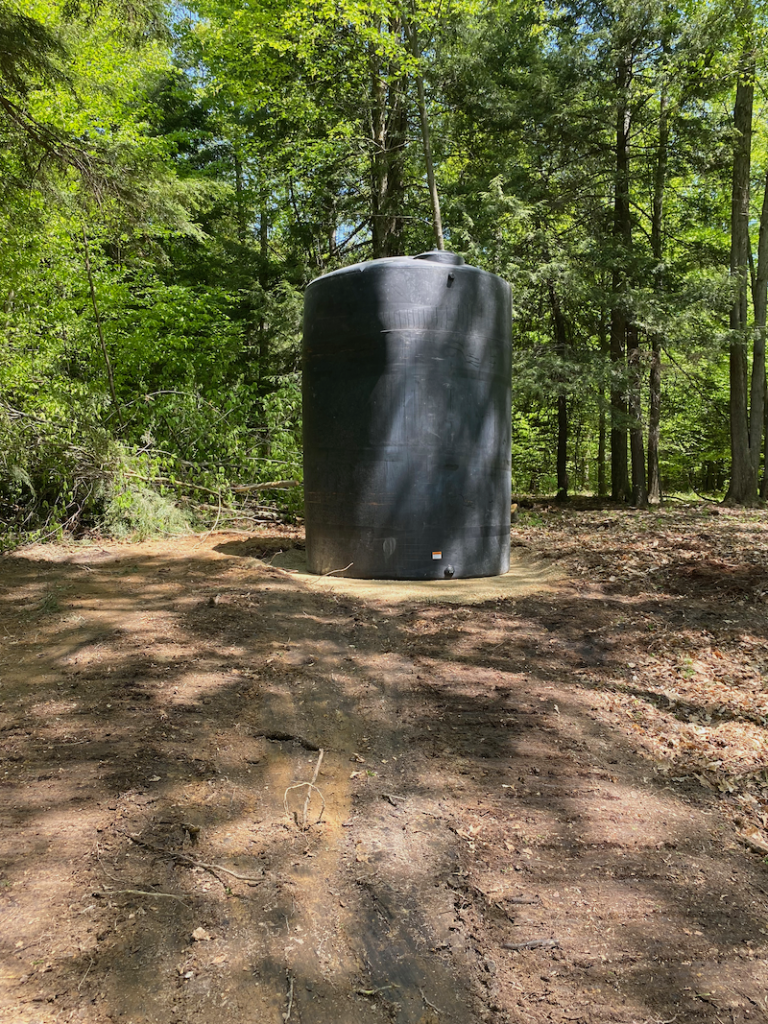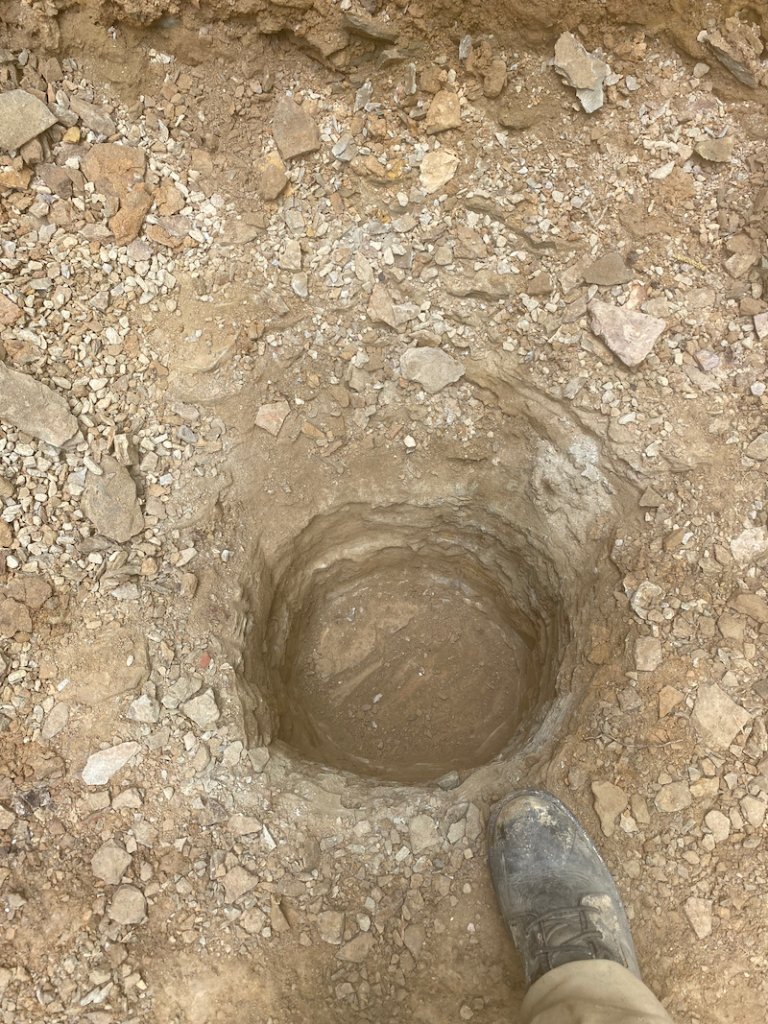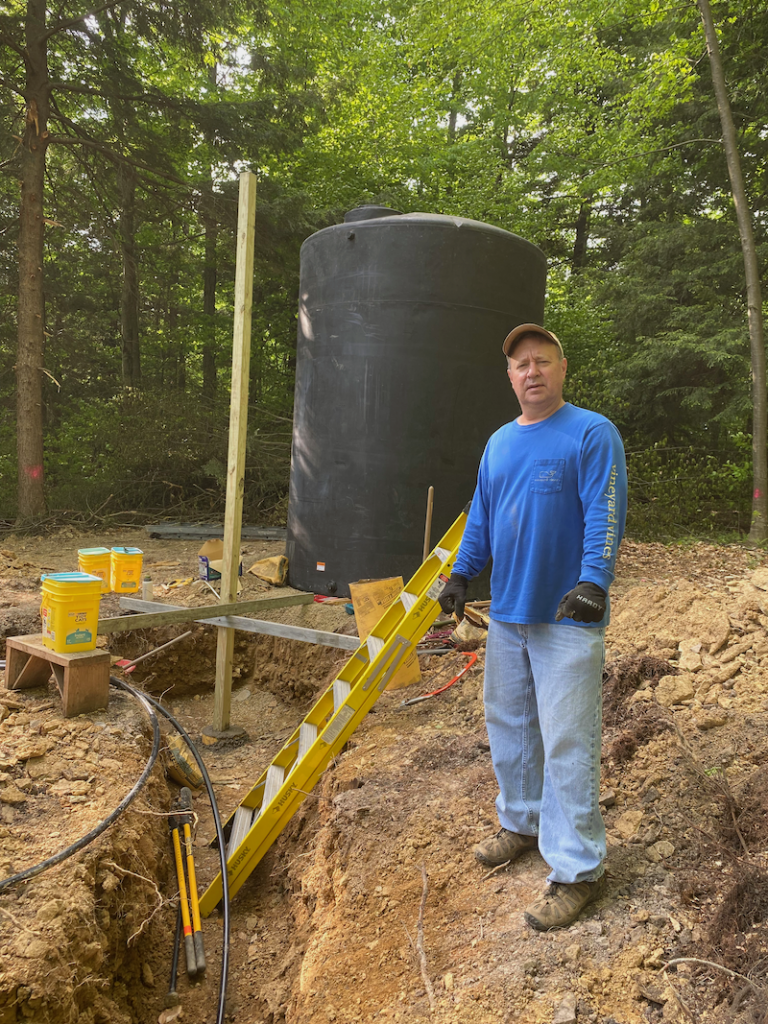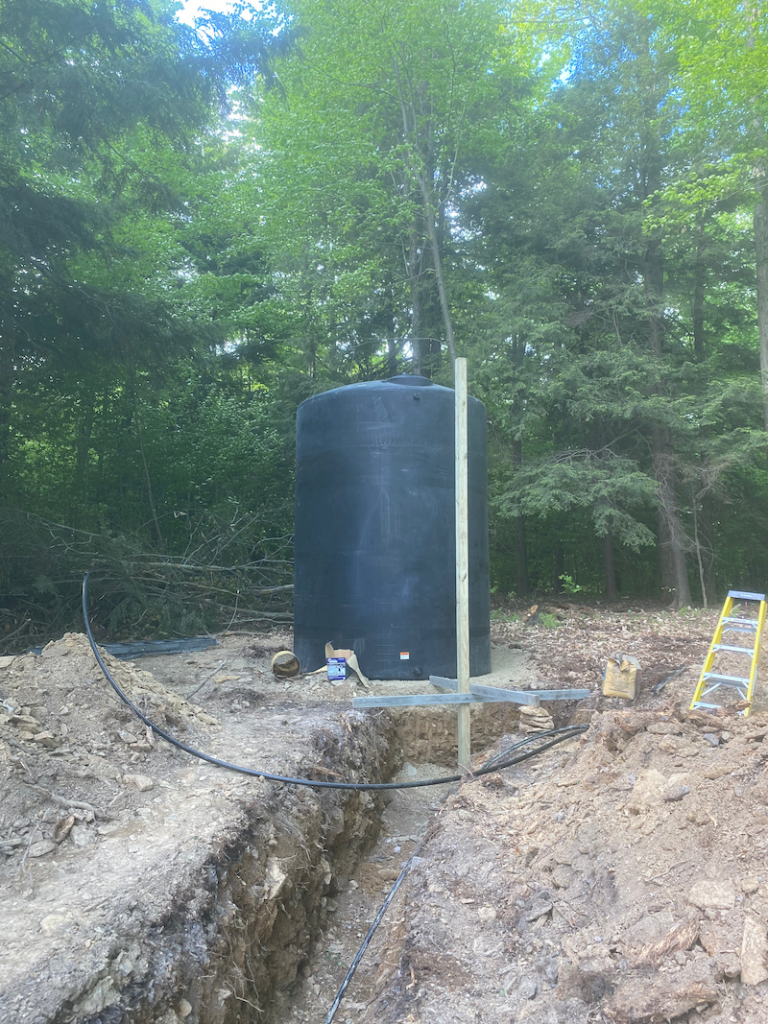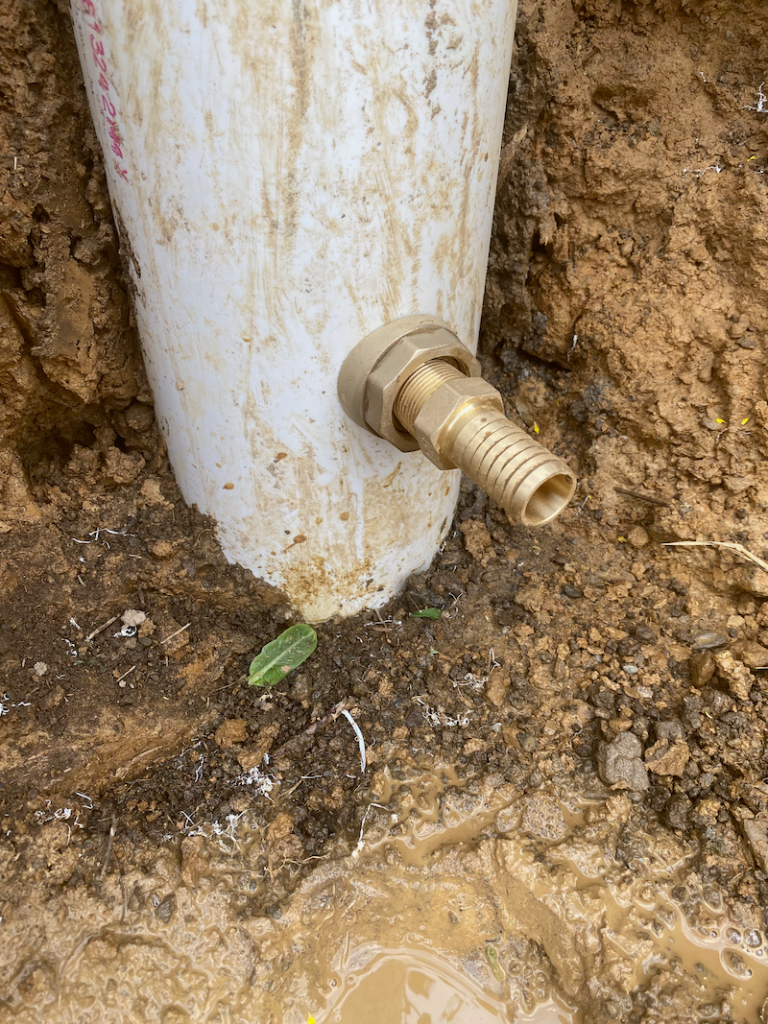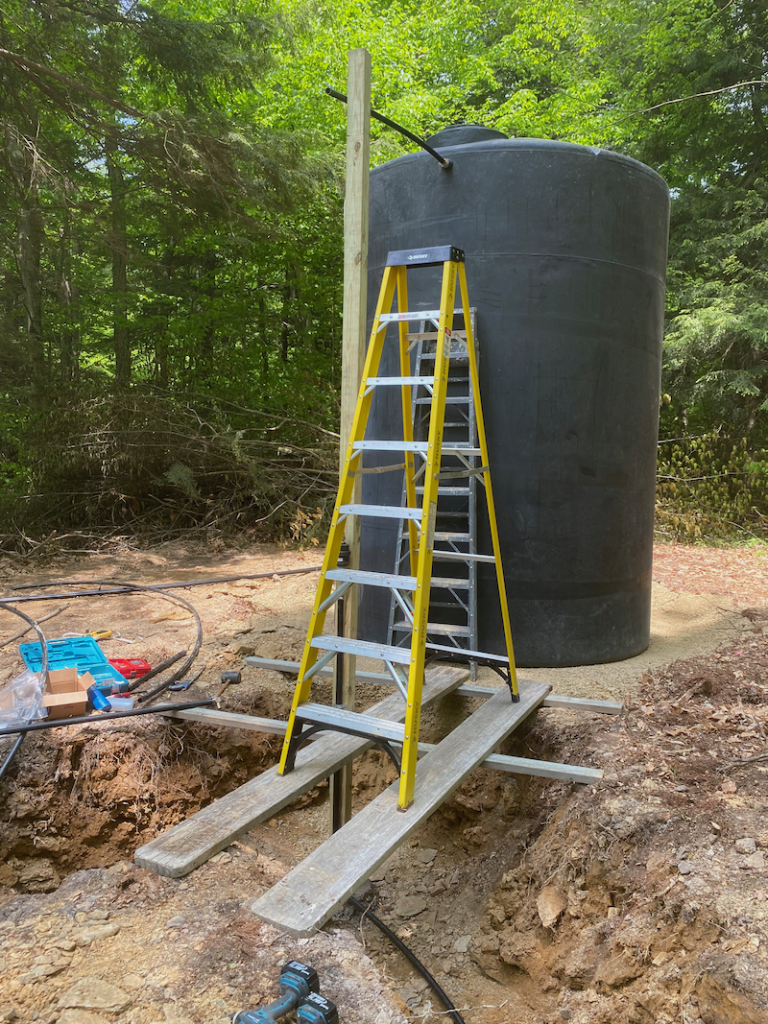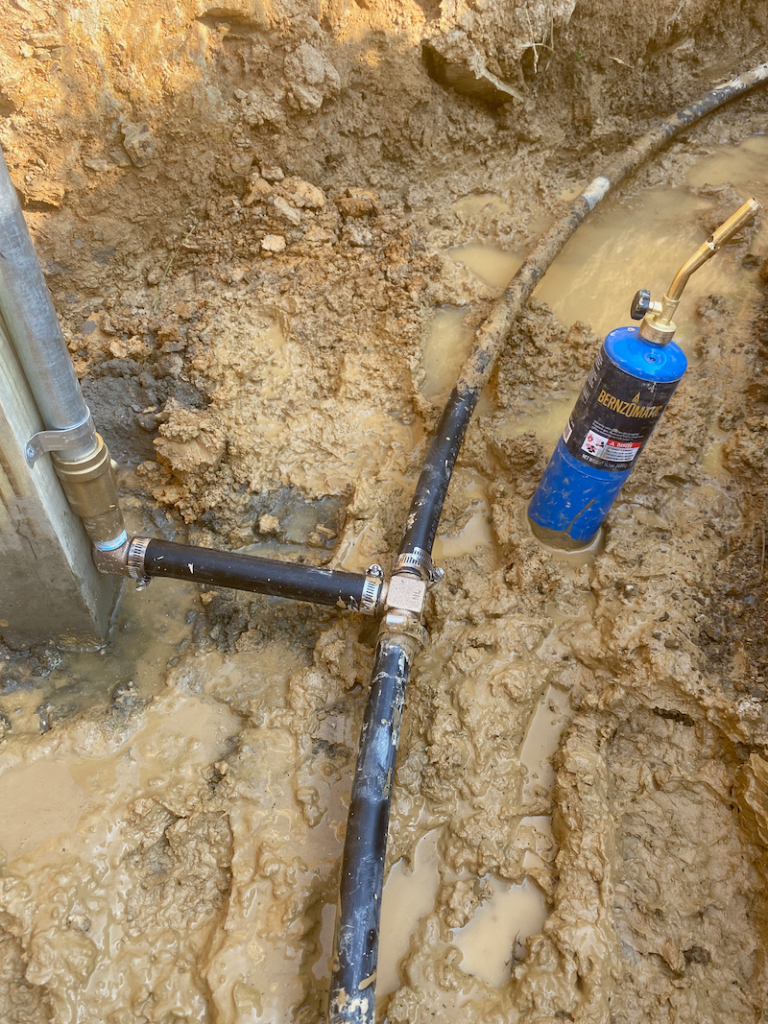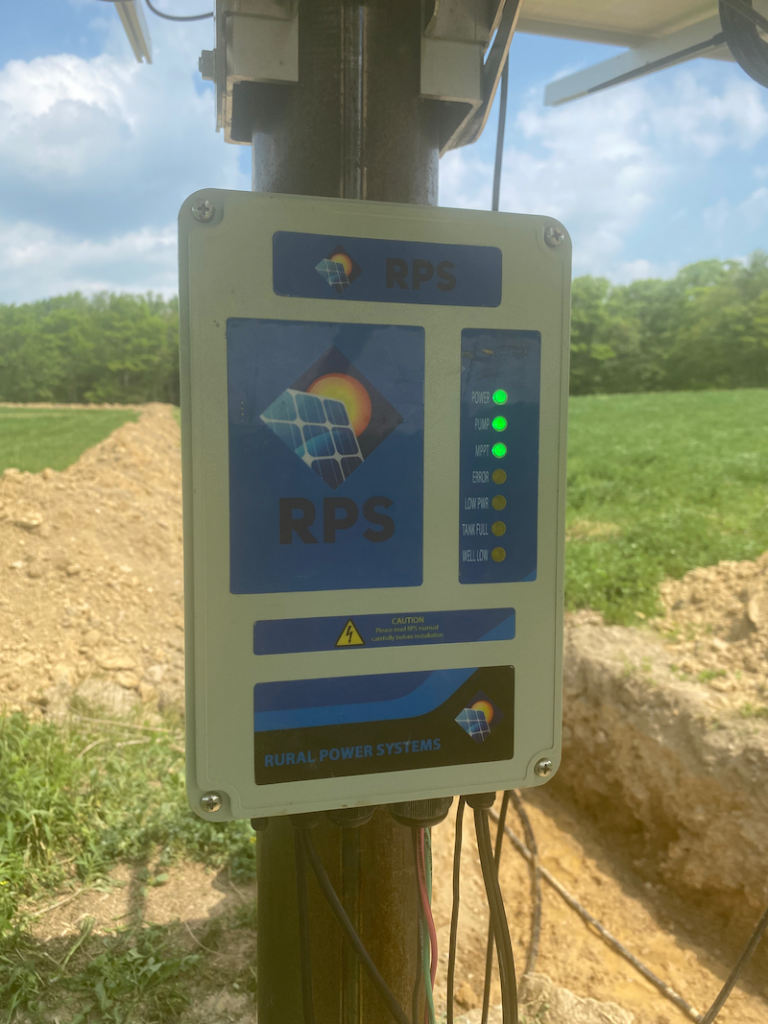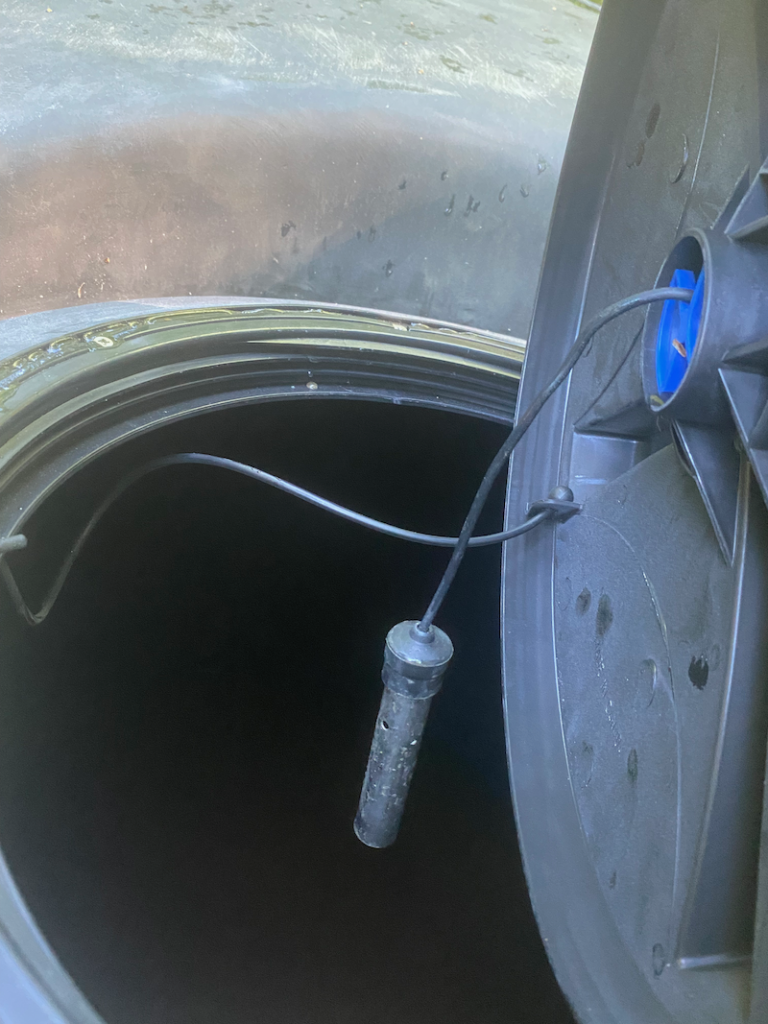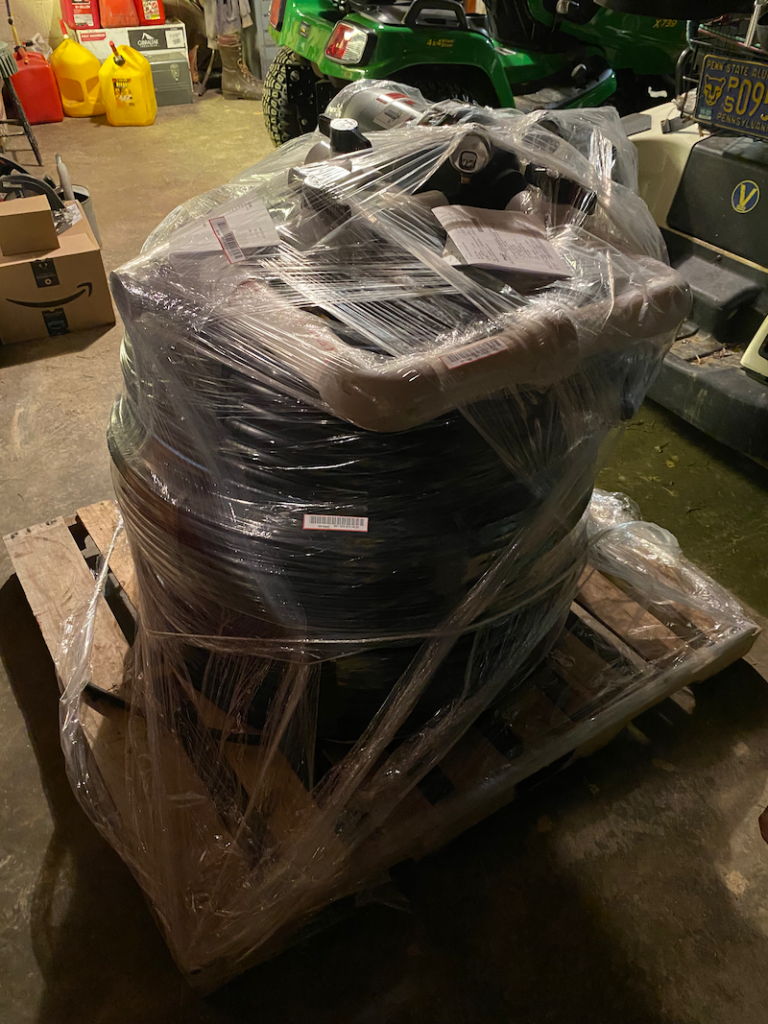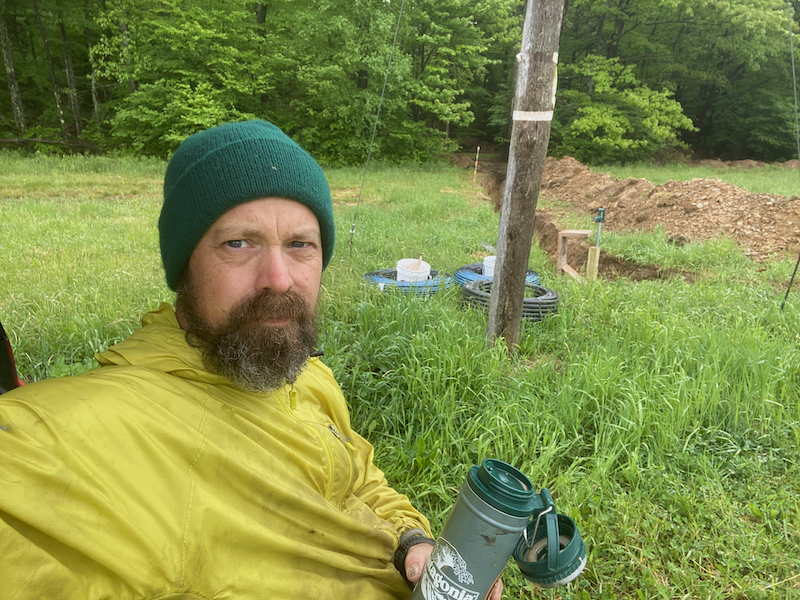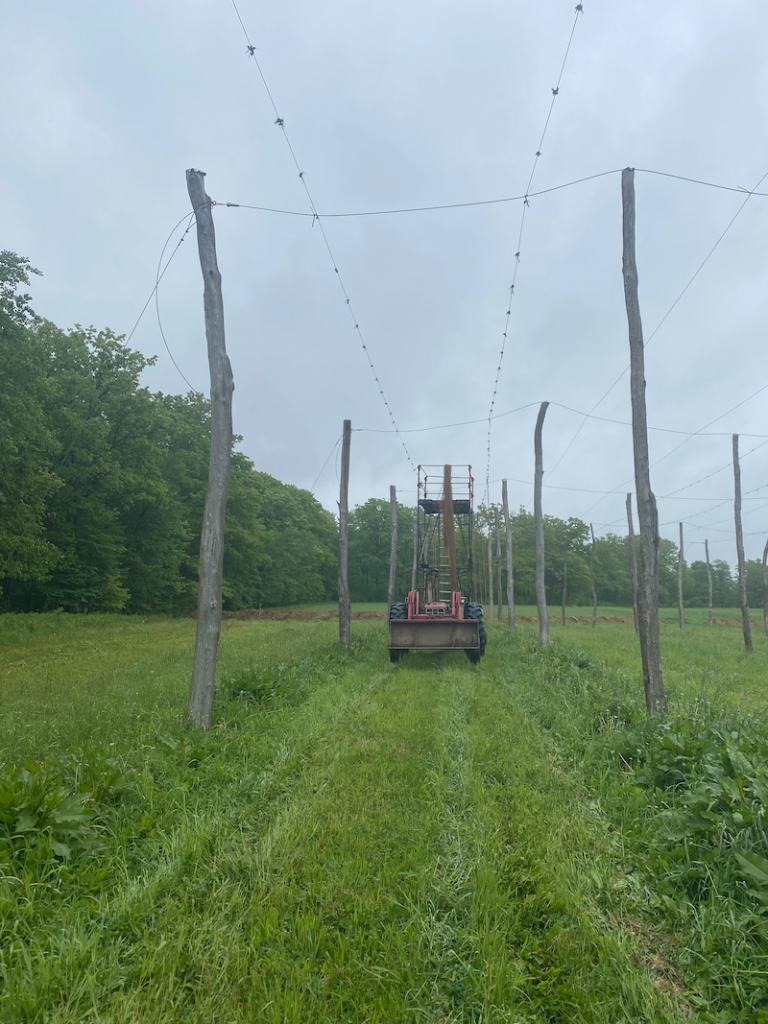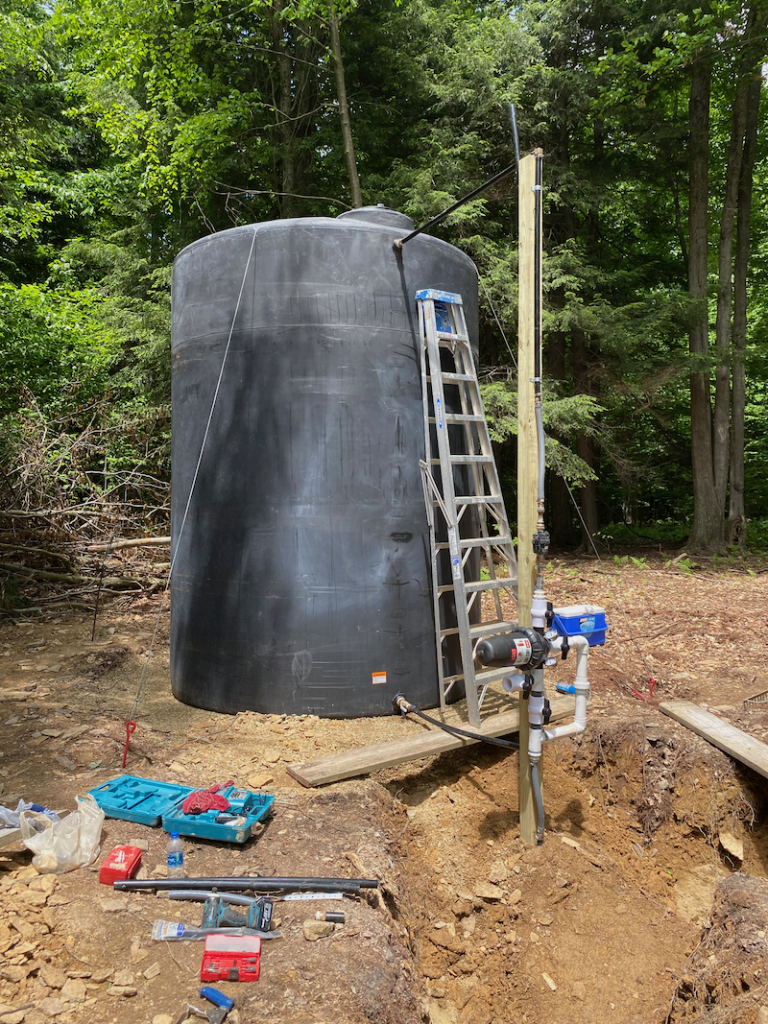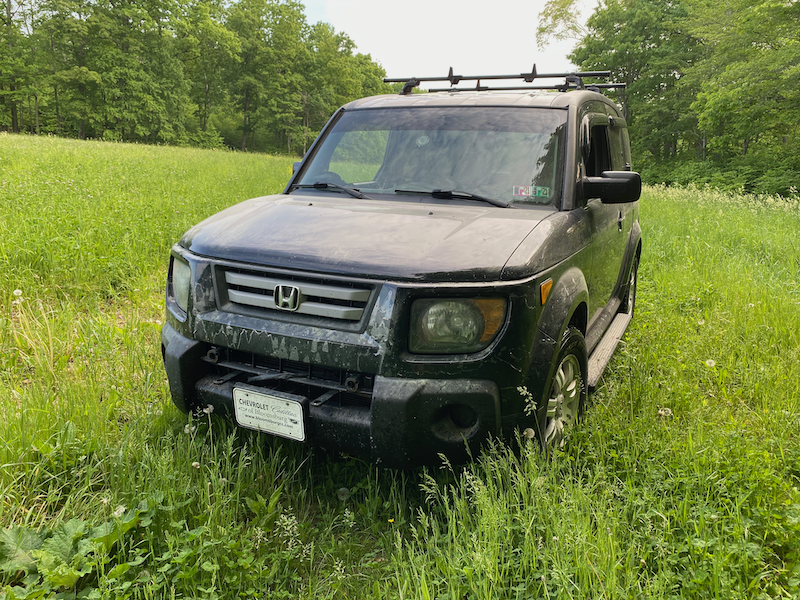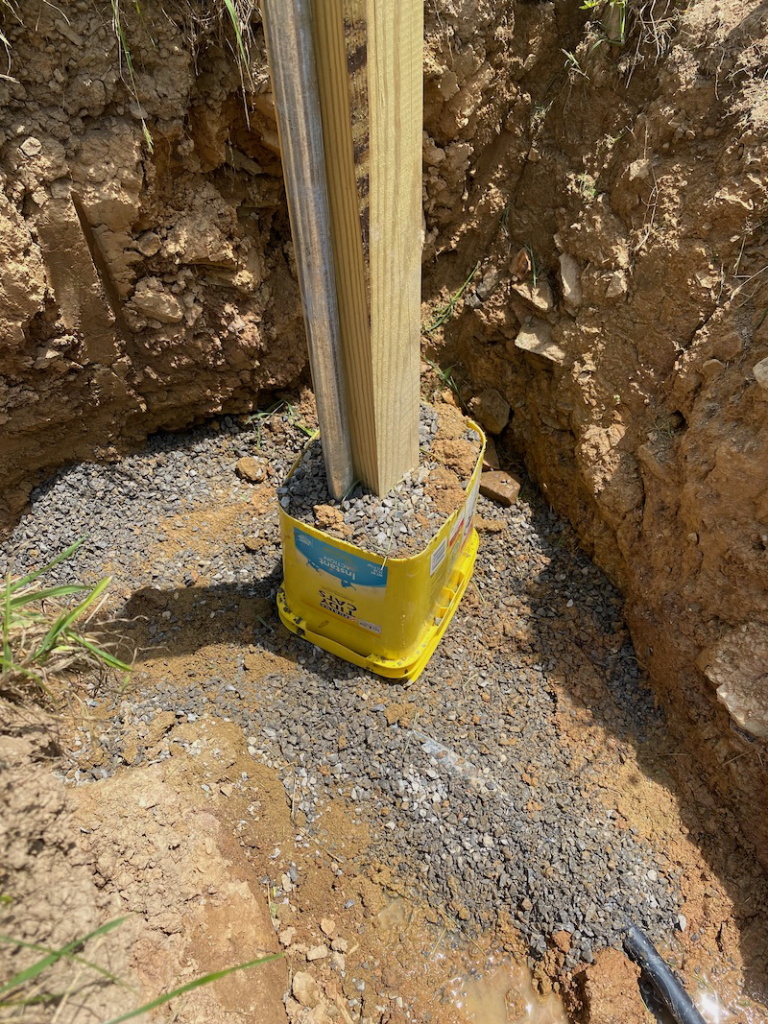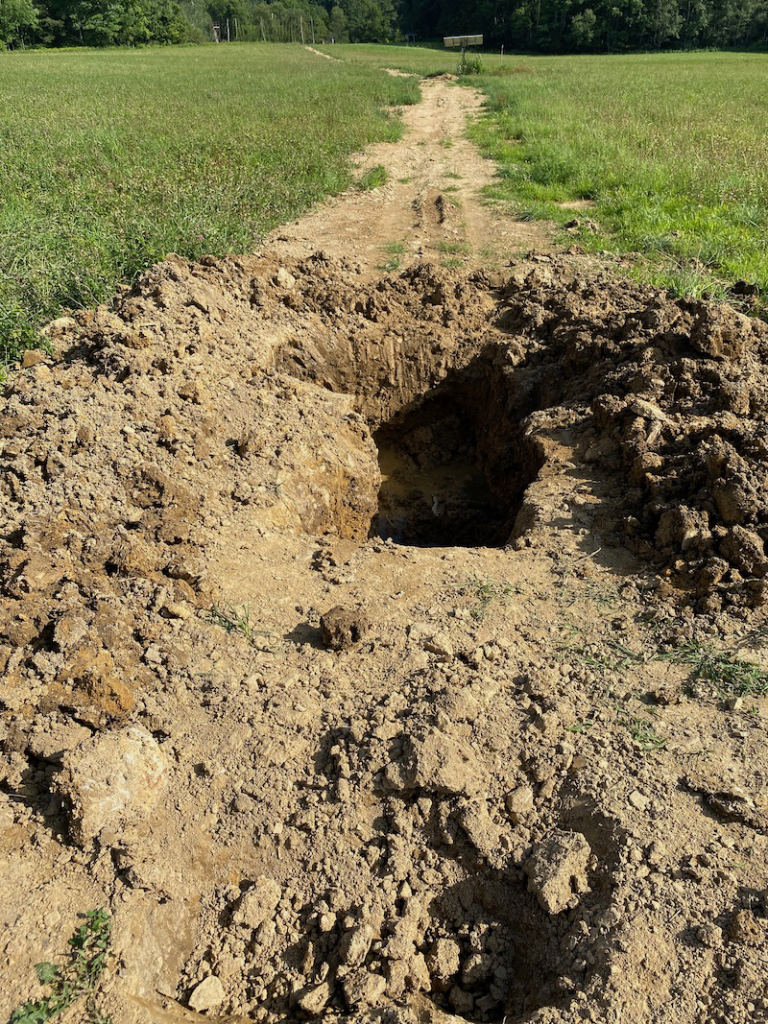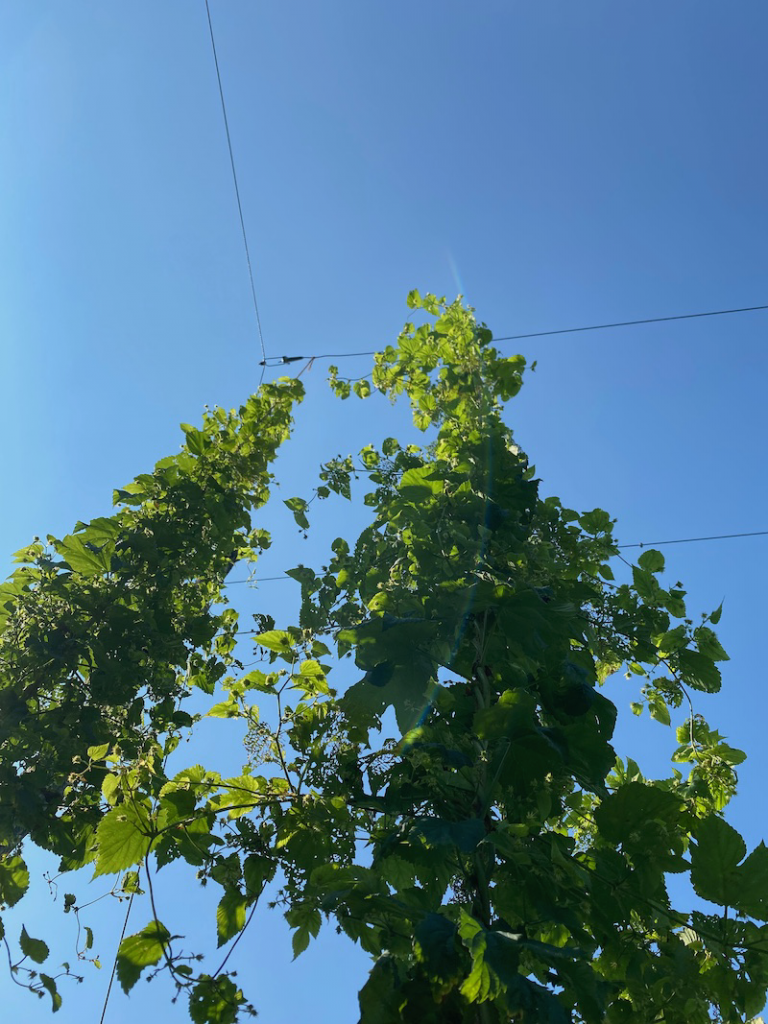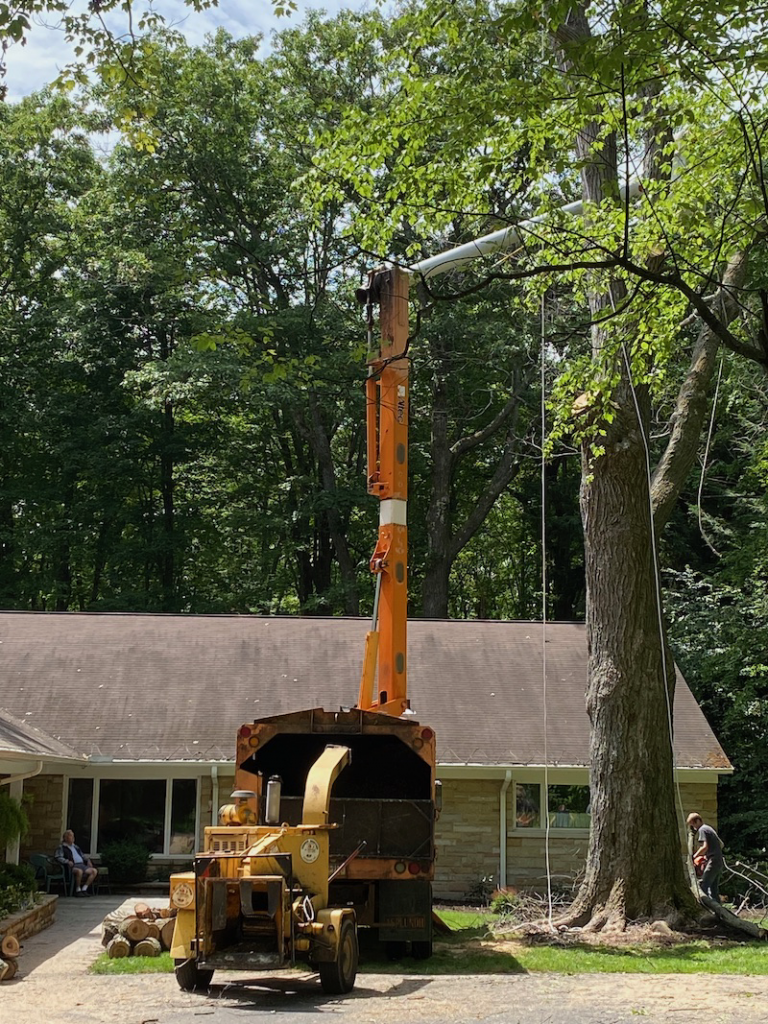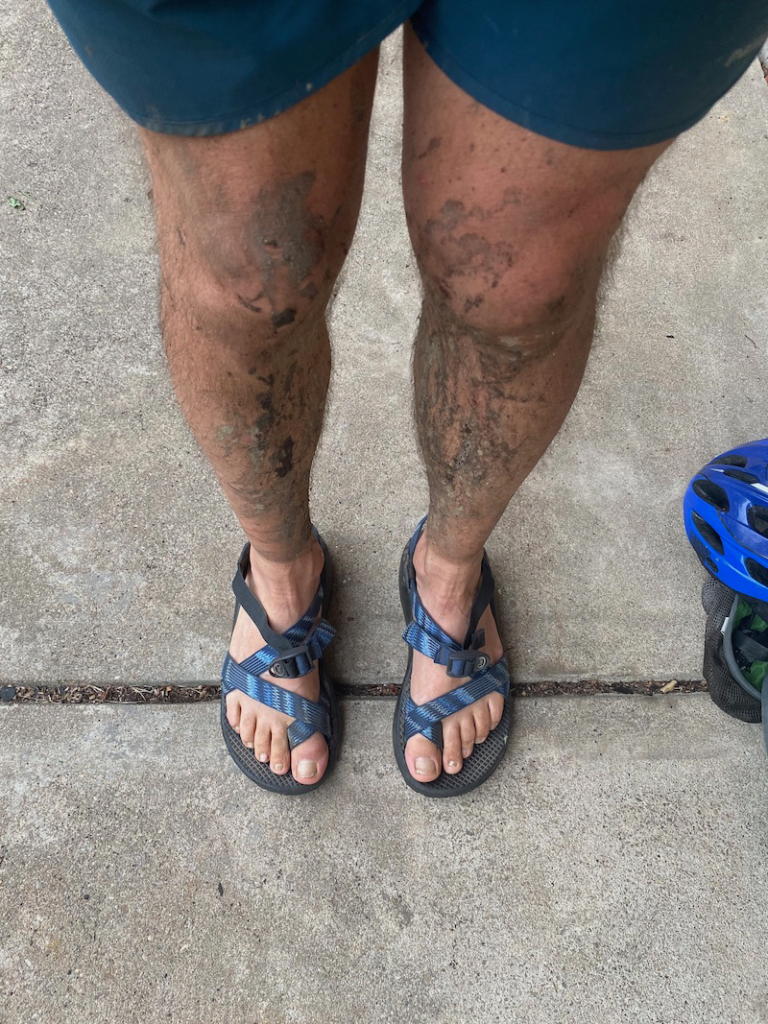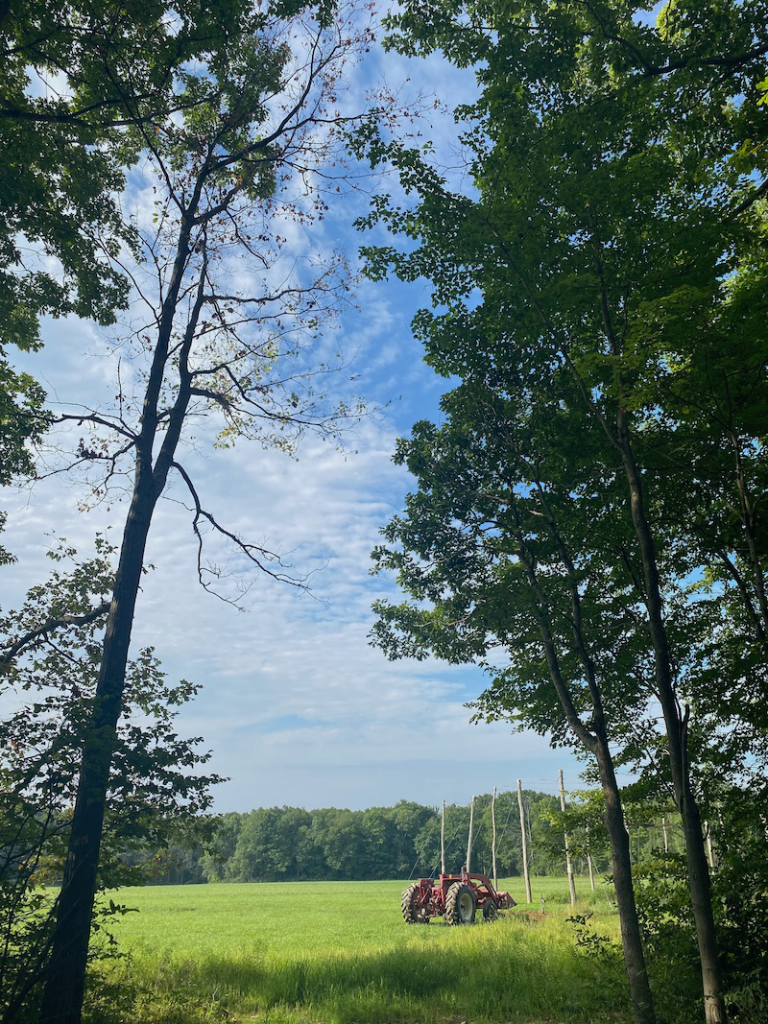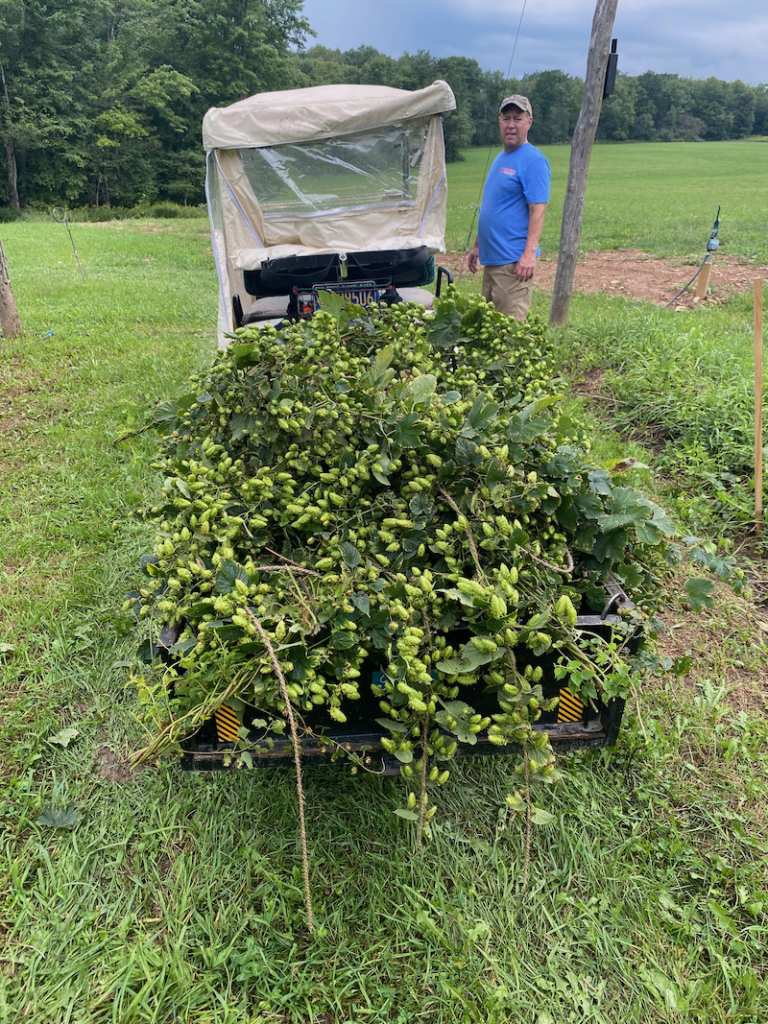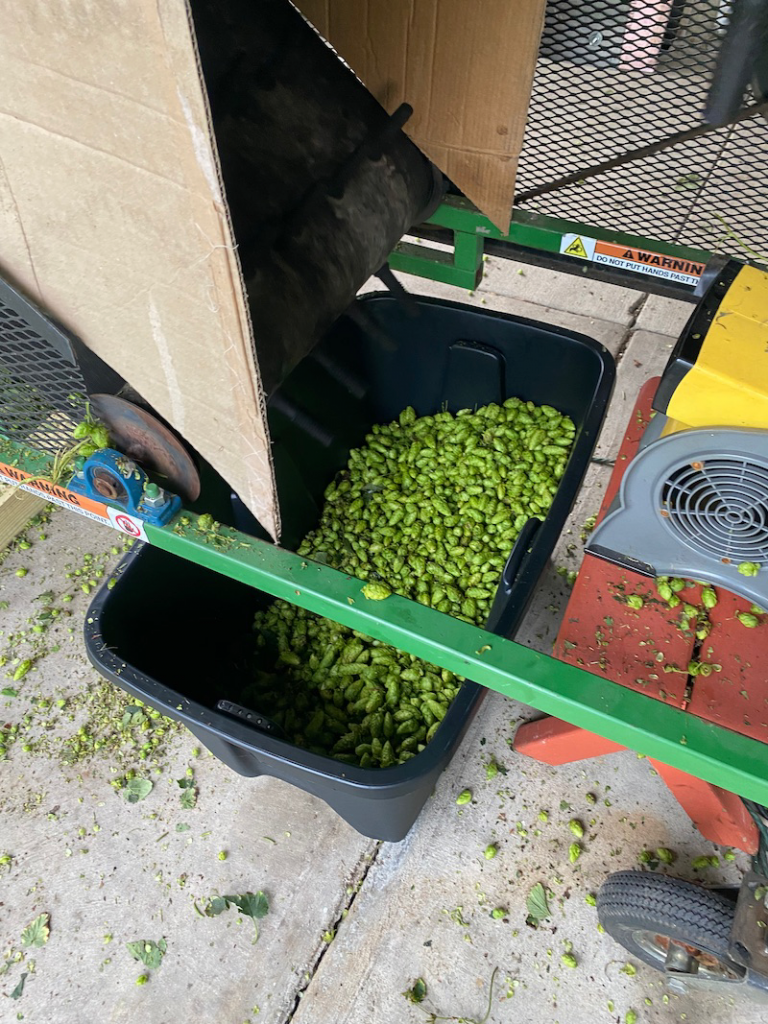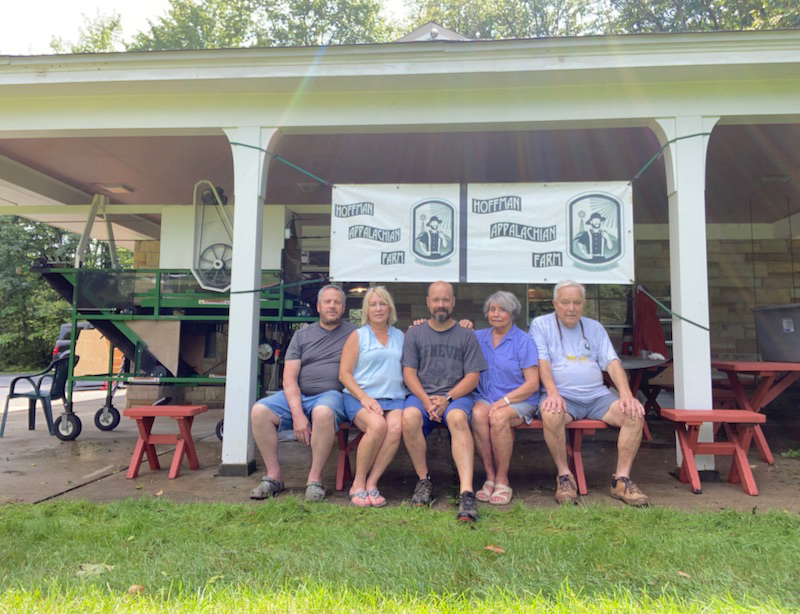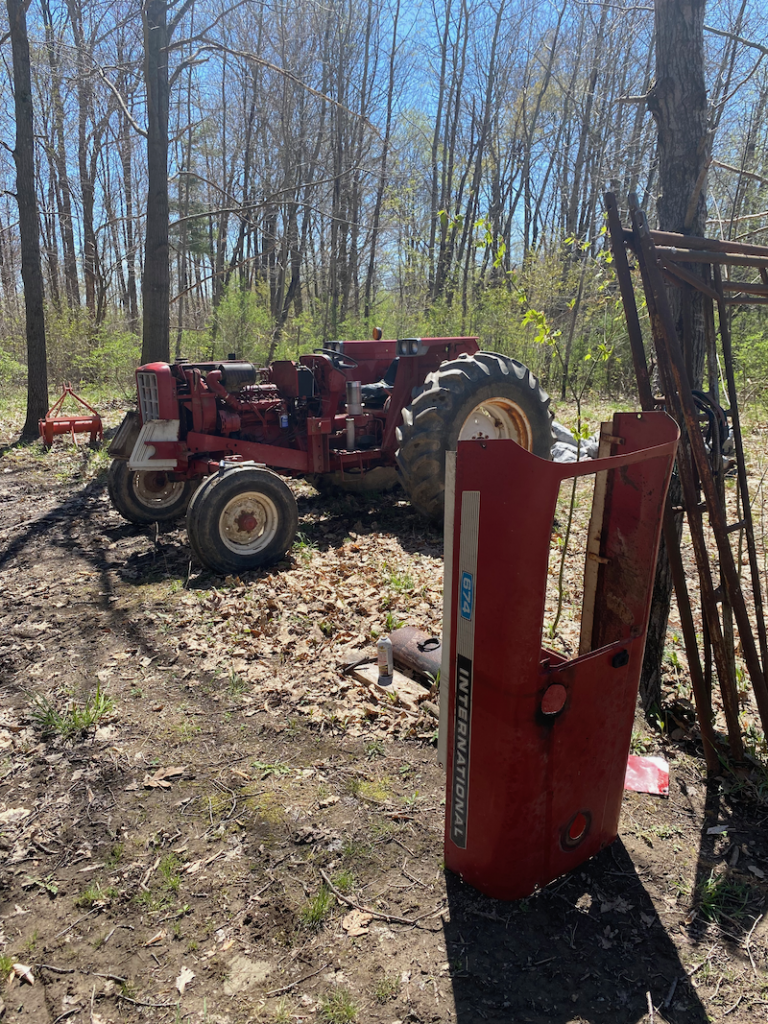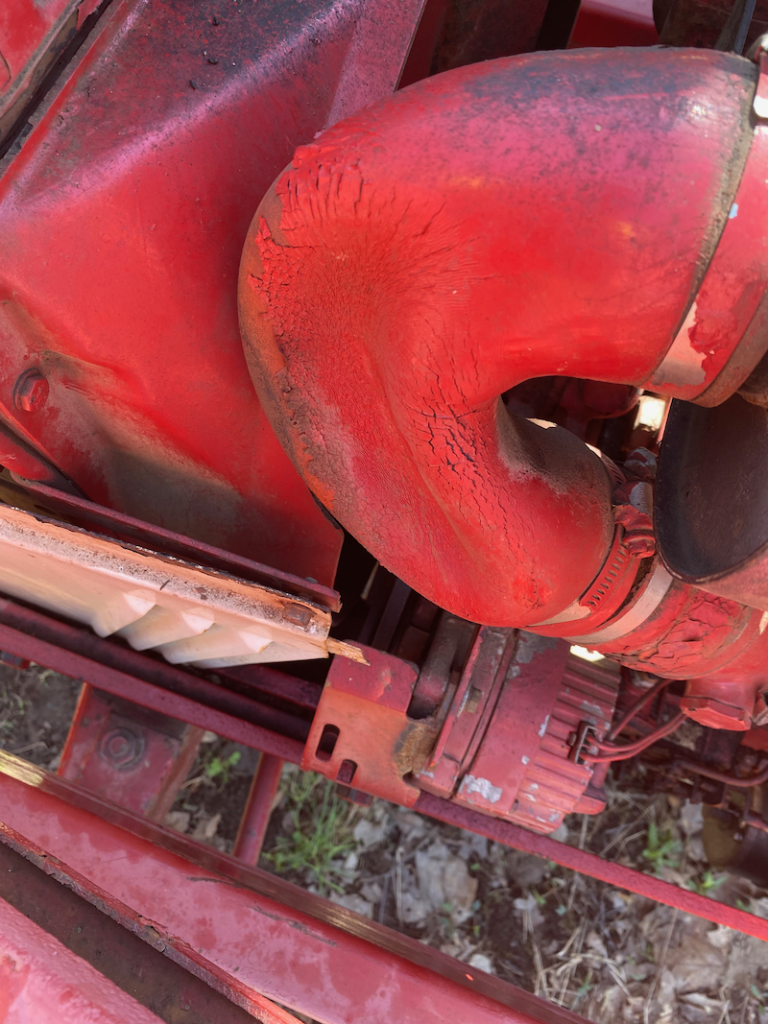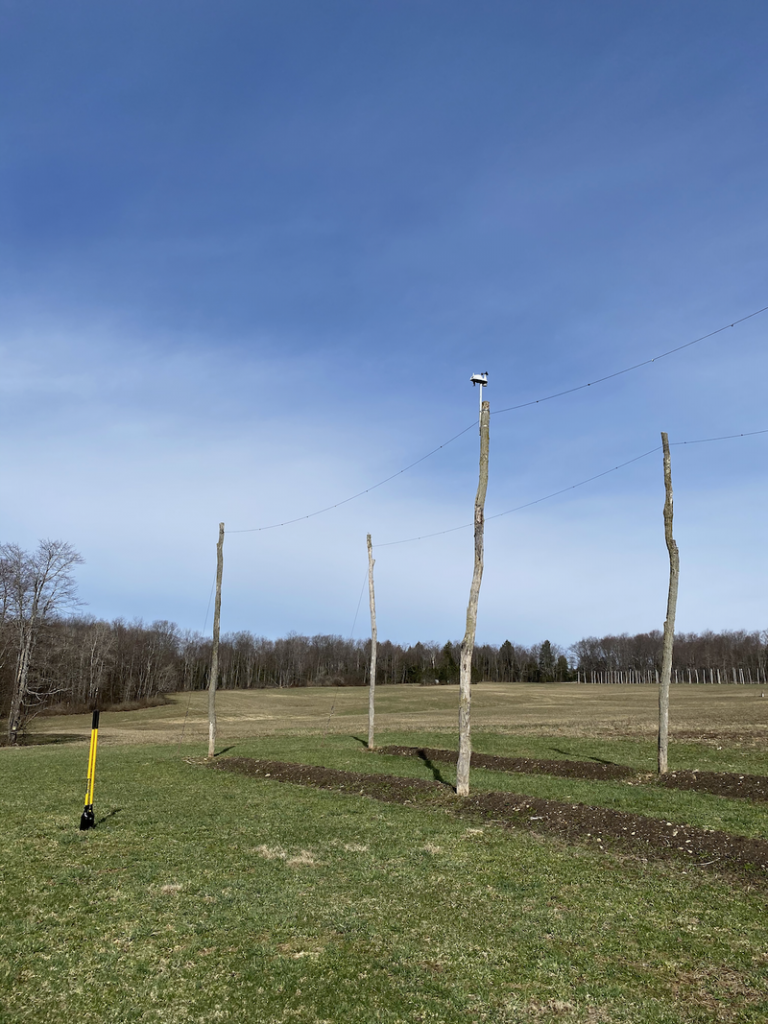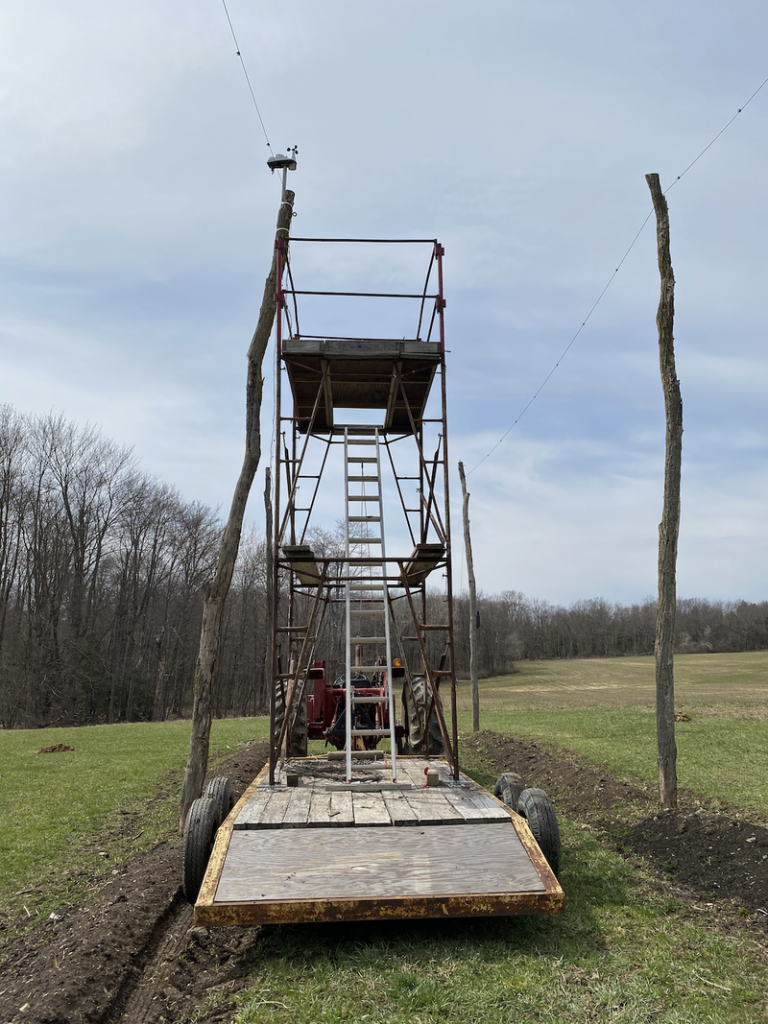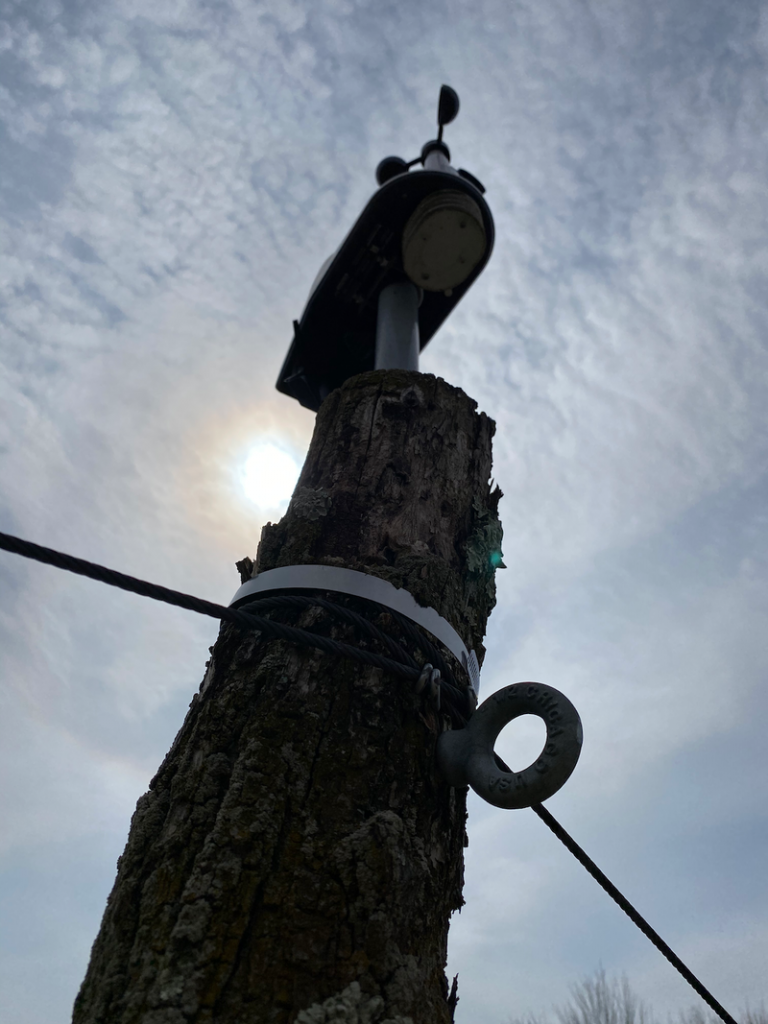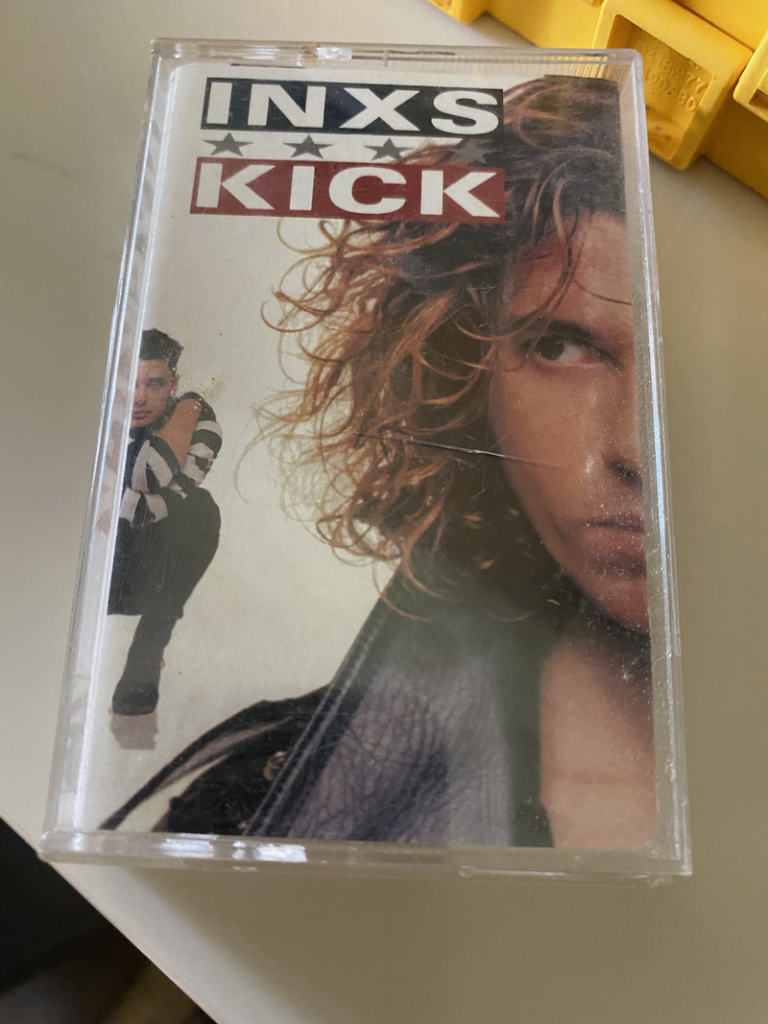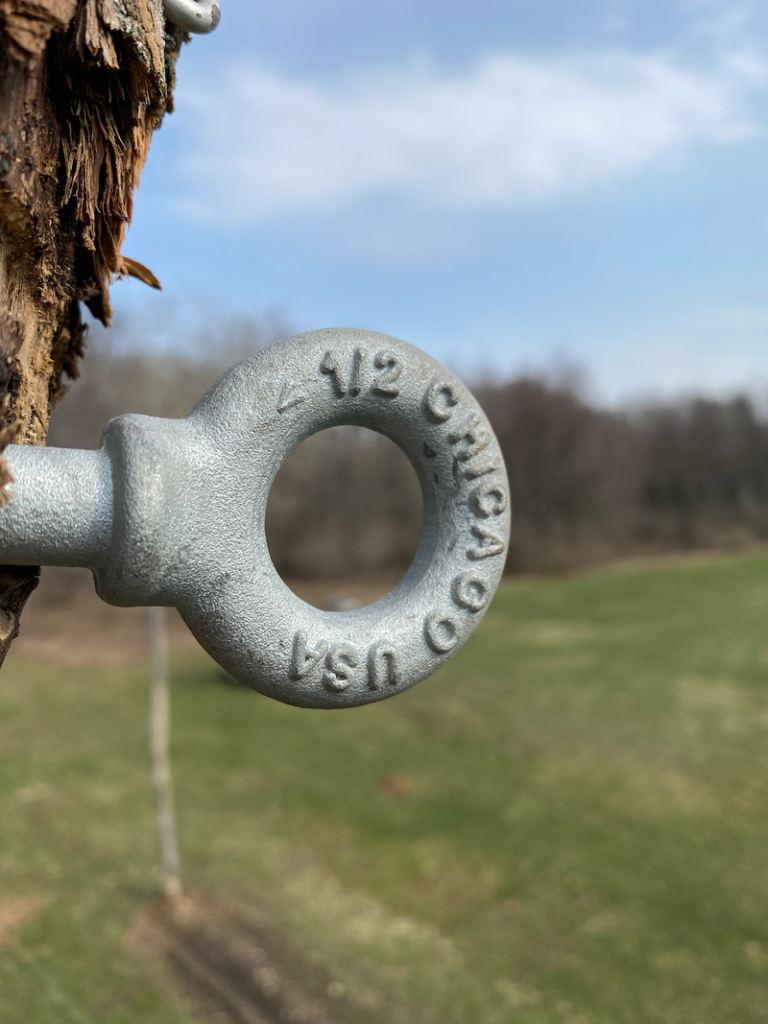A Certified Naturally Grown Farm - Saint Marys, Pennsylvania
“God Bless Us, Every One!”
Posted on December 22, 2021 by Joshua

Like most, it’s that time of year where we reflect on the good, the bad, the happy, and the sad of the year we’ve come through. It was a challenge for sure at the Farm – starting and completing a solar irrigation project installation pretty much all on our own while still trying to run the day-to-day schedule.
However, we also know how indeed lucky we are to be happy, healthy, and continuing to work in unison with this land our Grandparents, Ray and Helen Hoffman, took on many decades ago. We’ve learned to work and enhance what the land offers rather than trying to mold it into something it is not. Our soils are not the sandy, loamy soils of Michigan or the Pacific Northwest, but we have learned ways to slowly improve them over time, naturally and sustainably.

Thanks, Shane, job well done, we LOVE it! We look forward to sharing a taste with all the family this Christmas.
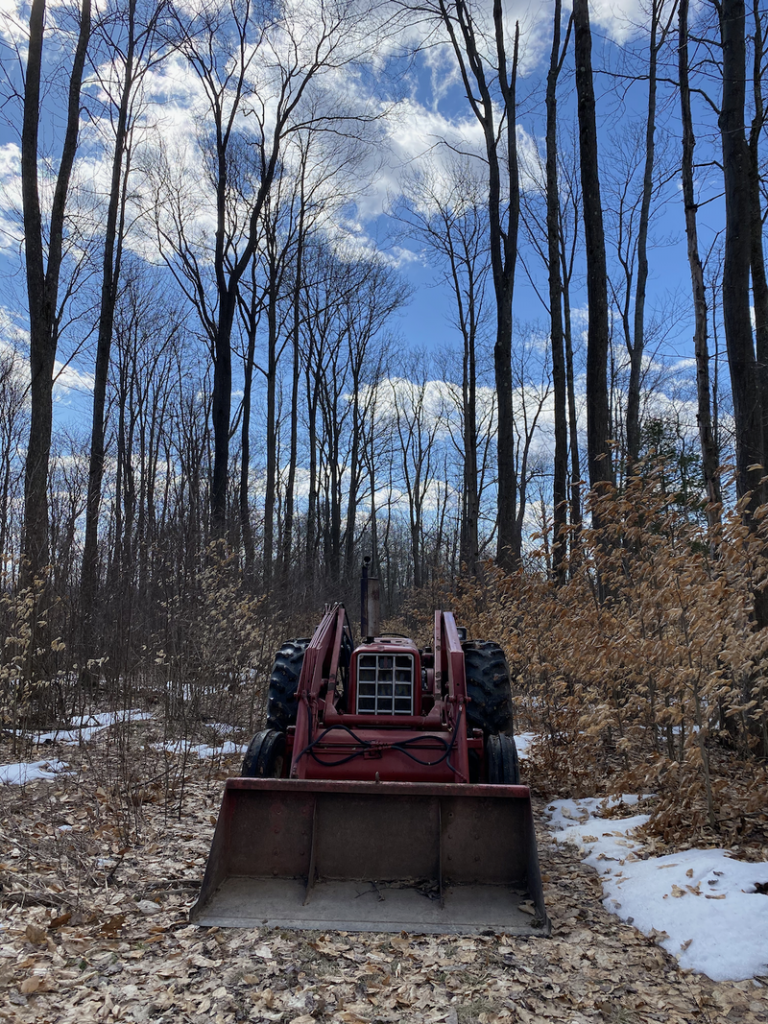
“A reasonable agriculture would do its best to emulate nature. Rather than change the earth to suit a crop it would diversify its crops to suit the earth.”
— Verlyn Klinkenborg
So it is our simple wish that you and your loved ones, whatever your faith…whether you express one or not…enjoy the company of those gathered around you. And for those who cannot gather for whatever the reason, that you may share a spirit of love, compassion, and empathy with them however near or far.
2021 Season – “It’s Done”
Posted on December 17, 2021 by Joshua

Apologies upfront. I’d stepped away from the weekly blog in late Spring as we began in earnest on our Natural Resources Conservation Service (NRCS) solar pump/irrigation grant project. Although we’d been awarded the grant back in 2019, with the pandemic running its course through 2020, we couldn’t start until this year. It was also difficult to find a local contractor with the experience needed that fit our budget. Luckily, we did!
Once the snow finally cleared in late April/early May, and after we’d gotten on RJ Volmer Excavating‘s schedule, we could finally begin work. As an aside, as it turns out the owner, Ryan Vollmer, and I played together on a team back in the Knothole years. One of the great things about growing up in a small town!
Here’s a rough look at the timeline, from the start of the NRCS project, through the various phases to completion, as well as harvest time:
| Dates | Activities | Installer(s) |
| May | ||
| 6 – 9 | Solar panel base, panels, pump installation | Joshua / Mike |
| 20 – 21 | Trenching | RJ Vollmer |
| 24 | Storage tank post install (inflow & outflow pipe, meter, filter) | Joshua / Mike |
| 25 – 26 | Storage tank meter install, well pitless adapter, mainline install | Joshua / Mike |
| 27 – 29 | Large yard drip tube install | Joshua / Mike / Devin |
| 29 – 31 | String large hopyard, begin backfilling | Joshua / Mike / Devin / Leroy Kopp / Ted Weiser (Dozer backfill) |
| June | ||
| 1 | Sand base, backfilling | Joshua / Mike / Devin / Ted Weiser (Dozer backfill) |
| 7 | Storage tank water filter install | Joshua / Mike |
| 13 | Frost-free hydrants install, small yard drip tube install | Joshua / Mike |
| 26 | Sand base, backfilling | Joshua / Mike / Brenton Mitchell / Ted Weisner (Dozer backfill) |
| July | ||
| 2 – 3 | “Tank full” wiring issue, bury electrical at pump | Joshua / Mike |
| 17 | “Hilling” small yard | Joshua |
| 31 | “Tank full” fix in place | Joshua / Mike Engel |
| August | ||
| 8 | R&R, Brock Family Reunion | |
| 15 – 21 | Prepping for harvest | Joshua / Mike |
| 28 – 29 | Harvesting, drying, packing | Joshua / Mike / Mike Engel / Mom / Dad / Amy / Bill |
Getting Underway | May 6 – 9
The first step, even before Ryan and his crew started trenching the 4′ deep lines for the irrigation pipe, was getting the base for the solar panels installed. At the recommendation of my father-in-law, we’d contacted McDermott Welding in nearby Kersey, who had just what we needed: a 10 foot, schedule 40, 4.5″ OD 4″ ID steel pipe.
With the pipe on hand, the requisite number of bags of cement, and a liner tube, I drove all the materials up in the bucket of the IH to begin work. First order of business…dig the hole…by hand…4′ deep, 12″ across in our clay soil. And would you believe it? I didn’t hit a single large rock the entire way that I had to break apart. Surely the “You’re Under a Real Time Crunch Here Brock to Get This All in Place by End of June” gods were smiling on us 😉
With the pole in place and secured, we let it cure in the cement. The next day, work began on installing the solar panel and pump. I think “being under the gun” with this entire project, had my mind in a tizzy. I’d read, re-read, re-re-read the manufacturer’s installation instructions. It seemed like it should be easy but when it came time to put the panels themselves in place, I couldn’t figure out to start from the center and move out. The guide rails are much longer than needed in our instance – I’m sure they’re cut at that length to accommodate a larger number of panels when needed.
In any event, I panicked and needed to call up my brother-in-law Bill who thankfully had the presence of mind to start from the center and realize any excess railing not covered was indeed meant to be. Whew! Work continued and the panels got installed, along with the control panel. Next was the solar pump and pipe itself which also brought its own hiccups.
So I don’t forget, the manufacturer of this solar panel/pump is RPS Solar Pumps. We’d started discussions with them almost two years earlier on this project and overall, we’d give them great praise from sales to service and installation. The NRCS grant didn’t specify where we sourced the materials, that was all on us. Other than the fact RPS doesn’t have staff available on the weekend except for “emergency” text support – a time when most of us small Farms would be working on these types of projects – we’ve been very impressed with them!
Brother Mike stopped out late morning to help with this phase of the process. He missed my “meltdown” earlier regarding the panels thankfully. With this help, and that of Tom Carey my AccuWeather boss (also a Farmer) via phone, we got the pump connected to the 100′ of poly pipe and dropped into place deep in the well. We had to use the “Farmer lifeline call” to Tom as when we were dropping the pump down the well casing, when it reached one of the welds in the pipe, it got stuck. The pipe, although somewhat flexible, becomes mostly stiff as you feed more of it down the well, and it rides against the side of the well on the way down. It just doesn’t drop straight down as you might expect.
So after spinning around in a circle, gently pulling the pump/pipe up then back down again, it finally passed that weld. We had to do that twice. We hit water already around 30′, which is great, as that means when it came to its final resting place, there is 70′ of water above it. Oh…to top of the experience…it started to snow…in early May. Wonderful.
Trenching, Storage Tank, Mainline Pipe | May 20 – 26
With the solar panels and pump installed, it was time for Ryan Vollmer and his team to start the trenching. This was something I’d toyed with doing on our own – renting the equipment – to keep the cost down, but there couldn’t be any errors in depth consistency. The flow of water from the tank to the hops is all thanks to gravity. Any places where the base of the mainline poly pipe wasn’t as level as could be, were possible issues affecting pressure and overall water flow.
As such, we called upon the professionals for this part and the placing of the 5,000-gallon tank. We sourced the tank from a supplier in NY. Our intention was to try and source it locally, but the price was almost double and it wouldn’t arrive in time. We then purchased the tank from the NY supplier and had them deliver it to Vollmer’s business directly. Ryan and crew then brought it to the Farm as it awaited installation. The guys arrived on time and got to work right away. Two on the crew at this point – one being Ryan’s own son – and they started at either end of the field and worked their way towards the solar panel.
While they were trenching, we were working on clearing as much of the brush and trees that would lead up to where the tank would be placed (highest point on the property to ensure the highest pressure level). We did what we could with our 40-year-old McCullough chain saw, but in the end, one of their crew would have to clear out some of the larger trees we couldn’t manage safely. At the end of the first day of work, they’d trenched 80% of what needed to be done. It was incredible to see the precision – also a bit overwhelming to see the scope of the project with that much soil moved.
Although the majority of the day went quite smoothly, a little bit of a scare as I drove the IH back the old Keystone Road to tarp it for the day. As I was traveling along, I noticed what felt like some extra “play” in the steering. I slowed down the speed, and as I was turning the corner by our small back field, almost no steering at all. I parked the tractor, hopped down and looked and there it was…a crack in the steering rack. Ugh…heart sank! I placed a call to Ryan for his thoughts and he recommended calling the folks out at GM Equipment Rental. Sure enough, they sent out their tech first thing the next morning…super nice kid…really skilled. I watched as he cleaned and welded it all back together, all in less than 45 minutes. Whew!
Day two of the trenching process was primarily creating two trenches through the woods above the large hopyard and across the old Keystone Road. This was the area where we’d cleared brush and trees. Two concerns…the first being that there is a natural gas line running alongside the road that had to be identified and second, the road itself. Seneca Resources, which owns the line and most of the mineral rights on our property and those around us, send out the well tender early and he spot-on identified its location for the trenching crew to work around. We’d placed a call with PA One Call a month or so earlier regarding this, however, they failed to mention it. Luckily Ryan Vollmer noticed the flagging the day previous.
The second concern I mentioned was the road itself. Although it does sit on our property and isn’t a primary or even secondary road, we make use of it as well as the well tender for shallow wells on our property and other adjoining properties. Also, our neighbors make use of it was well mostly for walking. As such, we knew we wanted to get those two trenches backfilled as quickly as we could.
At the end of day two, all the trenching was complete, the tank that had been placed the day prior now had the intake and outtake trenches in place, and the IH was back up and running. Brother Devin was kind enough to stop out and document the extent of the project with his drone once Ryan and his crew had departed.
With the trenching complete, it was now time to get the mainline 1″ poly pipe rolled out in the 2,000′ of trench. Sounds easier than it actually is. Poly, though flexible enough that it comes rolled, it is not fun to unroll and place in a trench. Took Mike and me a while to get down the system. A shout out to Jim Fedorko at LB Water for sourcing all the poly pipe we’d need. Great guy. Even though LB Water is based out towards Lancaster, Jim literally lives right up the road. So we had the tubing, next we need all the brass fittings to hook sections together along with connections to and from the tank, to and from the frost-free hydrants…it was a lot to keep in mind. Thankfully the staff down at Keystone Diversified Pipe Supply helped us through the process, figuring out each fitting we’d need based on the NRCS schematics.
Once the 1″ main lines were all in place, we also needed to place the 12′ post in front of the irrigation tank. And if we thought our clay soils were tough out in the fields, we weren’t quite ready for the shale soils waiting for us. The post we were placing served a couple of purposes. Primarily, it was to mount both the intake and outtake water lines to and from the water tank. Additionally, the water filter needed to be mounted on it (more on that later). As well, the “tank full sensor” wire would need to be run up this post as well.
Yes, the shale…that was a bugger banging through to place the 4′ tube that we’d then cement the post in place. We sourced the 12′, 4″x4″ pressure-treated post from Burkes Building Center in town. Between there and Suburban Building Center down the road, and an occasional trip to Tractor Supply, we found everything we needed locally. You’ll see from the pictures below, the “fun” involved, along with the sketchiness of getting the post in place along with securing the poly pipe to it, and later the heavier filter on the intake line.
And on that note about NRCS, at each major phase of the project, our rep Randi, would need to stop out to inspect the work to make sure it met the specs. Additionally, we were often emailing questions back and forth to her, the NRCS irrigation engineer Zach, our District Conservationist Suzanne, and Jared the Supervisory District Conservationist. A huge thanks to each and every one of them for guiding us through the process!
Once that was all in place, early the next morning I was up at the tank at first light to see if everything had come together and if we indeed did have water flowing. I just had to wait until the sun was up high enough to hit the solar panel and power up the pump. Sure enough, around 7:30 I heard a trickle of water starting in the tank, the water meter starting to click and we had water!! As the sun rose higher, the meter started to really “whirr” and I could hear and see the water pouring into the tank. I can’t explain the elation I felt sitting up at the tank, alone, amid all these piles of dirt, near our newly installed tank…it was overwhelming, to say the least!
Drip Tubing Install, Stringing of the Large Hopyard | May 27 – 31
With the main lines in place, we also needed to get the large main header lines placed in both yards respectively. Those would then tie in the driplines that ran down the tops of each hop hill. This is where the main action happens watering the hops.
As with the solar unit, we’d researched dripline providers years ago. We found a great one up in Hollis, NH – Brookdale Fruit Farm. I came across this family-owned Farm and distributor years ago. One of the family members was a featured speaker in one of the webinars the University of Vermont hosted. Specifically, I’d like to thank Heather Darby and her crew at UVM Extension for the immense volume of research, videos, and overall support they’ve offered to small hop Farms like ours in the Mid-Atlantic and Northeast.
After many, many emails and phone calls with Zoe at Brookdale (who is also a stellar resource!), we got the drip irrigation materials approved from the NRCS folks and ordered them. Now there was a slight snafu at this point. Our understanding was that the shipment from Brookdale would arrive in a matter of days. However, through miscommunication or misunderstanding most likely on my part, that shipment was being drop-shipped by a trucking company. As such, it had no priority…it would arrive at the Farm when it best fit into the shipper’s schedule.
Realizing it was going to be sitting in Harrisburg over a weekend, a weekend we’d planned on working with those parts, and after a few frantic calls to local drop shippers, my Dad came up with a solution to call my brother Dave. The hope was if his company based in Phillipsburg had any shipments coming through there. They did not, however, Dave had a co-worker who was willing to make the 6 hour round trip between Phillipsburg, Harrisburg, Saint Marys, then back to his home in Phillipsburg for a very modest fee. Saved….again 😉
Dodging that bullet and now with all the materials at the Farm, brother Mike and I began work installing the header lines. Brother Devin soon joined in, which was good, as again, these types of things would appear to be simple to put in place – how hard could unrolling a spool of poly pipe be? Quite hard if you do it incorrectly, which is how we started out. The further we got into it, each row got a bit easier. It was comical at times though watching three grown men losing a battle to plastic tubing 😉
In addition to getting the drip tube and all the connections in place, we were finally able to at least get the large hopyard strung. Again, more than a month late. No worries though, as is always the case in Saint Marys, the weather cooperated. I “Josh” of course.
Sand and Dirt Backfilling, Filter Install, Frost-free Hydrants | June 1 – 26
With that phase of the project complete and the water pumping, time to get the header tubing and driplines installed in the yards themselves. The first step was getting our two, frost-free hydrants in place. That meant another set of hand digging post holes, putting in sleeves, cementing in the posts, letting them sit for a day then installing the hydrants themselves and tying them into the main lines.
These types of hydrants are really common on Farms. They run water up from a mainline where you can tie whatever you need into them In our case in both the large and small hopyards, we’d be tying in our drip irrigation lines. When the water is shut off at the hydrant, the water travels back down the pipe and is expelled out of it completely, ensuring in colder temps they don’t freeze up and crack. Hence the name.
Another large task we needed to complete was getting a sand base over the main 1″ poly pipe before we had Ted Weisner bulldoze the dirt back over it. We certainly didn’t want to risk damaging the pipe as it was going to be buried 4′ under the soil. I never want to see that pipe again in my lifetime that’s for sure. We snagged 3 tri-axle loads of sand from Ryan Vollmer and used the trusty IH to ferry the sand from the large yard down to trenches. It was a team effort with brothers Mike and Devin, and two good friends, Leroy Kopp from town and App House buddy Brenton Mitchell who’s made many trips up to the Farm to help over the years.

An AccuWeather buddy, Brian Mullin, also made the trip up that day to check things out.
I’d drop in a small bit of sand on one section, watch as Devin and Mike guided me, move the tractor down a small section, repeat until we used up the bucket load. Then while I was running up for a new load, they’d spread and tamp down the sand. After a full day of that, Ted would stop over after work and just bulldoze the dirt back in place.
And that in a nutshell was June. There was weeding for certain (when isn’t there?) and we did also manage to sneak in getting the small yard strung and trained as well. And without getting ahead of ourselves, even being strung late in the season, looks like we’d have the best yields yet!
To boot…with every aspect of the NRCS project in place and inspected…we were given final approval!!
Sensor Issues, Tidying Up Wiring, Hilling | July 1 – 17
No sooner did we receive the blessing from NRCS that our project met all the specs and final repayments could be made than we started seeing an issue with the “tank full” sensor. And by that I mean, it wouldn’t shut off the tank when it was indeed full and it would overflow.
Our kind neighbor who walks our back road daily, Earl Hepner, called my Dad to let him know. Earl’s the fella who stops by whenever I’m up there working. He says he enjoys our chats and that he learns something new about hop Farming each time we visit.
My fear was that when the dirt was backfilled on the last section to the tank – as everything had been working to that point – that even with the sand base, the sensor wire had been sheared. As well, there are 2 connections along that route that also may have somehow broken. Just what we didn’t need. Now, RPS sells a wireless sensor kit, for this very reason. However, it was $400+ and it irked me that it might’ve been their wiring tied to the sensor that was at fault.
Long story short, I spent a number of different days digging test holes at each of those three locations looking for a possible break. No luck. Speaking about it to my Father-In-Law Mike Engel – who’s stepped in on many occasions to assist with mechanical or electrical issues – he thought it might also be that there was no break, just that with the weight of 4′ of fill on top of the wire along with the 750′ total run, that the sensor was indeed sending a signal, just not the one the control panel was looking for.
After running a number of tests with a voltage meter, me at the tank dipping the sensor in and out of the water, and MIke back at the console, he could see the voltage indeed changing. However it was not sending the voltage the panel was expecting so in essence, it didn’t “understand” what was coming back to it. A fix was suggested.
Rather than use the electrical sensor provided, we’d use a combination of a mechanical float switch at the tank along with a universal input/auto ranging relay back at the panel. We ran a few tests, the first one failing which almost dashed our hopes, then realizing a different connection was needed back at the panel, and HUZZAH! Success…Mike had the fix in place.
With that hiccup behind us, we could get back to the regular seasonal duties of weeding, trimming the hops, and adding compost to the hills. Things were moving along quite well, especially in light of the delay the project caused.
Rounding the Corner, Farewell to the Family Oak, Harvest | August 8 – 29
August is typically where we feel like we’ve rounded the corner and are just waiting for harvest time. I was able to sneak in some small breaks to get some hikes and trail running in back in Montoursville, as well as some incredible mountain biking with my brother Mike locally near the Farm and up at Jakes Rocks. We also had a Brock Family reunion with the immediate family.
And sadly, we had to say goodbye to the mighty Oak which has stood guard over the house since our grandparents build the house back in the 1950s. The last few years we’d noticed the Oak starting to decline and not fill out as it usually did. There are a number of factors we believe contributed to this, all out of our hands, but in the end, Mom and Dad decided it was best to trim it down so as to protect the house. The main trunk remains and we’re considering having some sort of carving one on it as a remaining symbol of our family and Grandparents. That is yet to be decided.
And of course, getting to the main event of the season we work towards every year, but most especially this year with our new irrigation system in place; harvest!
This is always a family and friends effort. Although we have made use of a mechanical harvester these past two years, a number of fixes have had to have been implemented, again with the help of Mike Engel. The unit we use has been known in the small circle of independent hop Farms like ours, to not operate very effectively. As such, many Farms have sold theirs or like us, modified it. The fixes have helped immensely, we have another round coming in 2022.
Harvest weekend occurred on August 28-29 and thankfully for the most part we had great weather! The crew consisted of myself, brother Mike, sister Amy and her husband Bill, and of course Mom and Dad. We were also lucky to have Mike Engel out to see his modifications in place, along with some additional fixes I added.
As is usual, two of us would cut the bines and transport them down to the barn for harvesting. Most years that consisted of a number of us hand-picking each bine. Not a difficult task, just tedious and time-consuming. As such, the harvester makes a huge difference, now that the modifications are in place. Larger Farms use Wolf harvesters out of Germany. These however would take up half a barn and cost more than a luxury SUV.
There is some hand picking and sorting required, but much less than in years past. Once the cones are picked, we drop them into drawers in the oast and once all are full, we fire up the oast to begin drying them overnight. This was also an ingenious creation of Mike Engel and we greatly thank him for his help designing it based on our specs
Overnight, I make at least two stops up to test samples and monitor moisture levels. Hops need to be dried down to between 8-10% moisture before properly stored. Once morning came, it looked like the hops would be ready around 10 am to begin vacuum sealing and cataloging. Again thanks to a family effort, we knocked this out in around 90 minutes.
As you can see from the photo of the bags of hops in the refrigerator, we had quite a bounty…our best year yet! And, this was on top of having to leave the Nugget variety on the bines as they were showing signs of downy mildew, an issue in our region. We started spraying early, but it appears not early enough.
All in all, 2021 was a supremely successful season with much to be thankful for. This doesn’t happen through the efforts of one person. Family Farms, particularly small ones like ours, are an “all hands on deck” effort. That can mean different things for different folks. Not everyone is out there laying pipe in the trench, or weeding in the heat…but everyone, every single person has played an important role from the very start of this Farm.
And for that, I am forever grateful.
“Bring me the hydrospanner!”
Posted on May 3, 2021 by Joshua
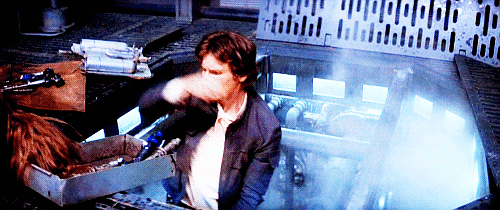
So at the end of last week’s work, I fired up the IH674 to head up to the large field for a small task I’ve put off for years. When we put in the large yard, my Dad and I spent an afternoon attempting to auger in anchors for the outer perimeter. As I’ve mentioned on multiple occasions on this blog, our soils are heavy clay. In more ideal soils, most folks can screw in the long 3′-4′ anchors into the ground. I have no idea why I even thought we should try.
Long story short, we’d get a few started and then hear a familiar “SNAP!” as the helix of the anchor stopped spinning, encased in our thick clays, and the shaft snapped leaving the head of the anchor above ground as it should, but not usable as it was attached to a broken anchor. These aren’t hurting anything per se, but they add something else to have to mow/navigate around above soil as they’re less from a foot from the finished anchors we dug holes for and backfilled.
Anywhooo…I was taking the tractor up to the large yard to pull those bad anchors out with the bucket and one of our strongest chains. When I fired up the IH, it began belching an odd color grey/brown spoke and spitting fluid. My heart sunk…all I could think was a head gasket had blown. This is a pricey fix (most times $2,000 or more) as you now have coolant leaking into the oil and if not fixed, could permanently damage your engine. We neither have the time, resources, or backup tractor to deal with this type of issue.
As such, I immediately drove the tractor over to it’s parking spot and shut it down, tarped it…and then lost sleep for an entire week knowing I’d have to open things up in the front end of the tractor, check for leaks and any other signs of what was going on. I’m a fair newbie Farmer mechanic, but this was a scary endeavor for me.
When we purchased this tractor a few years back, thanks in part to the former owner George Schettler who helped with paying for a number of the repairs, and our Barnraisers, there was extensive work that needed done on the engine as it sat for years outside untarped in the elements. It developed cavitation and needed repaired. I was fearing the issue had returned as it’s fairly common in diesel engines if not monitored and steps taken to prevent it.
Getting “under the hood” in these older IH tractors isn’t like opening your car’s engine hood. Here, the hood is bolted in place and as I’ve pointed out, I believe tractor engineers from days of ole are sadists…they love to put things where they can’t easily be reached. The first trick was taking off the bucket because well, you get access to some of the bolts with it on and that requires the tractor to be running 🙁 I fired it up and no issues I’d seen last week, but I wanted to only keep it running for a short a time as needed. Luckily the bucket on the IH has a fairly easy on/off process I’ve done many times. I got it staged, unhooked from the frame, got the hydraulics unhooked, and back away from it, parked, and shut down. Next to the muffler.
Once I got the muffler removed, and got 8 bolts out holding the hood in place, I was able to get access to the engine, filters, and hoses. I then began taking apart the air filter and found an insane mess. I know there have been one if not many critters that like to call this tractor “home” when it’s not being used, especially over Winter when it sits. Opening up the air filter, I have no idea how the tractor even started.
In addition to severely crimped hose from the air filter to the engine, something the shop should’ve replaced, the air intake was PACKED with acorns, insulation…anything the critter could find to store food and insulate their Winter getaway. After that was all cleared out properly, the hose un-crimped (thanks brother Mike!), radiator flushed and refilled with new antifreeze/coolant, and the blocked cleaned so I could check for leaks once restarted, I held my breath and let’er rip…
It fired right up, exhaust was perfect (if that’s not an oxymoron) and it hummed along as it should. I let it run for a few minutes before I took it for a spin up to the large hopyard and back. Parked it and let it run some more while checking for any leaks. All appeared good…thankfully!
As a result, no work was done in the hop yards, as by the time my brother Mike and I got all the bolts back in place, it was already 6:30pm and I still had to eat and get in the 2:15 ride back. But…we’re still pretty much on schedule for stringing and training so I just felt better knowing the tractor was good as we rely on it heavily for so many tasks here at the Farm. It’s a workhorse!
And The Hits Just Keep Onnnnnn Comin’
Posted on April 26, 2021 by Joshua

Like most hop yards, we plan days, or most often weeks in advance for specific activities to take place on the Farm. Many of which revolve around the Solstice, June 21st. That’s the day hops need to be to the top of the wire vertically, approximately 20′ up, to then begin producing their side-arms which is where the hop cones are found. The more vertical distance, the more sidearms, the more hops, the more beer. Simples, right?
Well sort of. I haven’t researched it a ton, but one would think having one of America’s oldest breweries located in their hometown dating back to the mid 1800’s, they must’ve grown their own hops locally, right? If they did, it wasn’t much as my guess is they brought them in from states like NY which was the capital of hops growing until the early 1900’s, or they imported them over from Germany. Why do I think this? Three reasons.
First, our growing season in St. Marys is nothing to write home to Bavaria about – see what I did there? It’s short, especially compared to the powerhouse hop growing areas of the Pacific Northwest, or Maryland, Ohio, and a few others. Second, there’s a reason bricks were made here in St. Marys – our soils are heavy clay. This combination does not scream “grow yer hops here!”. Finally, it gets humid here in the Summer. Not crazy humid, but humid enough that it helped contribute to the rise of pests and disease in those early East Coast hopyards that moved the vast majority of production West.
So how does this all tie back to the timing of events in the hop yards? Well because we know when the bines need to be to the top of the wires, and we know pretty well how long it takes them to do so, and how long after the initial emergence the healthier begin to grow vs the “bull shoots”, we can use simple math (thank you!).

The process follows this path; Snow melts in late March (usually…although we’ve had snow as late as the first week of May) and the first of the hops slowly creek through the warming soil. These are the “bull shoots”, the not-so-ready-for-primetime contenders. They tend to be brittle, hollow inside, and have a purple color to them. In addition, there can be instances of disease that slept through Winter and are reemerging with these shoots. So we do a combination of flame weeding, we also helps knock back the weeds, and hand cultivation.
By this time in the season here in late April, we want the health shoots to start emerging as given 2-3 weeks they’ll be ready to train to start growing on the coir. So at some point, now that we’ve knocked down the bull shoots, we string the yard so it’s ready to go when the bines are about 1′ tall which is when we can wrap them clockwise around the coir. That will be early-to-mid May for the stringing, and late May to have them trained. They then have that amount of time to reach the tops of the wires by the Solstice.
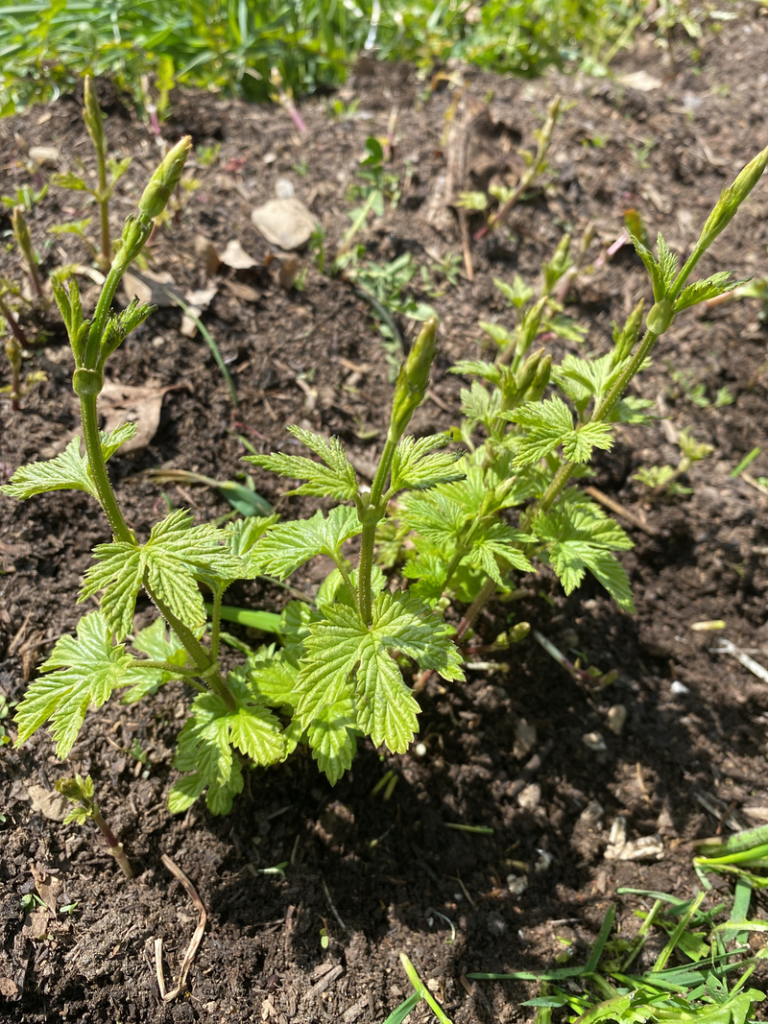
“Sincerely Yours, the Breakfast Club”
Posted on April 9, 2021 by Joshua

If you’ve followed along with the blog posts from this season, you may note a trend. I’ve been pulling images, storylines, or quotes from popular media – television shows, movies, both present-day and ones from my younger years. I’ve then been tying them or at least attempting to tie them to, the theme from the most recent workday.
This past week’s activities at the Farm, like almost all those before it, begin early in the day with a commute up to the Farm on a Saturday – hence this week’s “Breakfast Club” theme. I’ll admit it…I have a sophomoric sense of humor and the popular media of my youth brings back great memories. John Hughes’ films most especially.
This time around the project involves adding a set of perimeter anchors and wire rope to our small yard. Originally when the yard was put in back in 2015, we only intended for the hops to grow on 1 set of coir per plant, and up to the cable directly above the row. As it became apparent the plants had enough vigor to support a V-trellis system, with an additional set of coir going to cable strung in the alleys (giving it the “V” shaped appearance), we added those in. At first it wasn’t a problem as the plants were small and didn’t add alot of weight to those inner cables. As they matured and weighted those cables, they then started to pull the poles inward towards the alley.
As was done from the get-go in the large yard, we dug 3′ holes to bury anchors at the outer perimeter. This coming weekend (April 10th), we’ll then bury those anchors, secure the cables we strung today to both the poles and then back down to the anchors, and use the come-a-long, havens grip, turnbuckles and elbow-grease and tighten everything up. We can then rerun the V-trellis cables back down the middle of the alleys.
This will be good on one hand (proper support of the poles and the hops bines), but creates two issues. First, with those cables now extending out to the sides, we’ll no longer be able to run the larger IH674 tractor right alongside the outside of the rows, to mow. The tractor will be too large to fit so we’ll have to use the Bolens tractor. The second issue is that with those anchors and cables in place, we’ll also no longer be able to string using the “siege tower” from the outside of the yard. We may then need to purchase as use what’s known as a pardalera, which is like a knitting tool at the end of a large pole. Each coil will need to be attached to the outer cable one by one. Not a huge deal as there’s only 20 plants per row. Might actually be kinda fun as seen here…
When I took a break to grab a quick snack in the house, “older, wiser” brother Mike had one of my old cassettes, INXS’ “Kick” album, cranking on the stereo. Forgot how awesome that album is, so I immediately added it as a Spotify playlist.
As I wrapped up for the day, I noticed the time. I knew our trail cam, which is mounted to one of the poles on the Northwest side of the small yard, was about to fire off one of its four daily photos. It’s then sent via the glory of Al Gore’s Internet to my phone and email so I can keep tabs on things at the Farm when I’m not there. Of course I needed to “photo bomb” my own shot 😉

